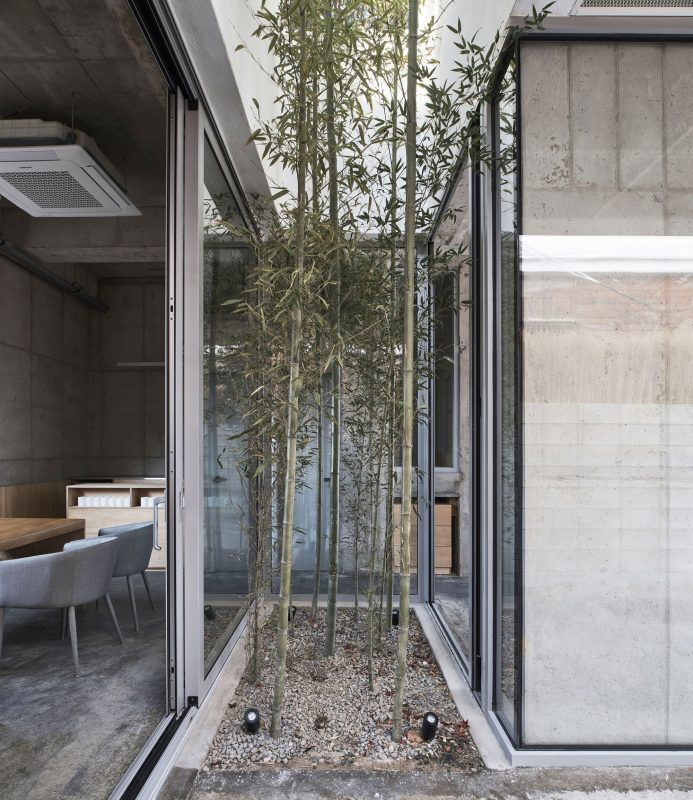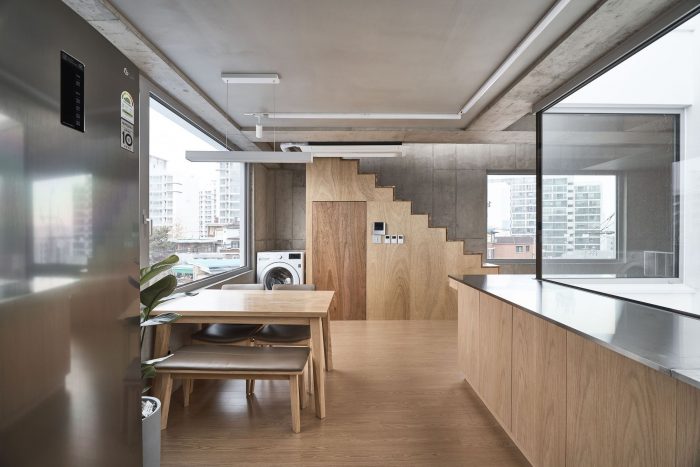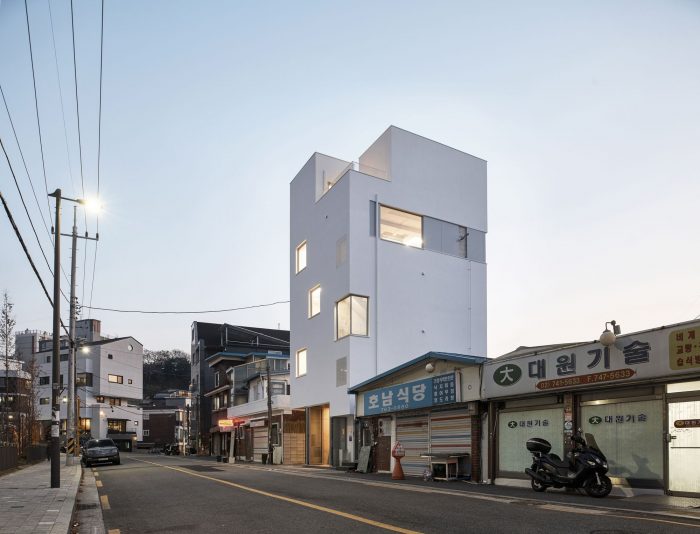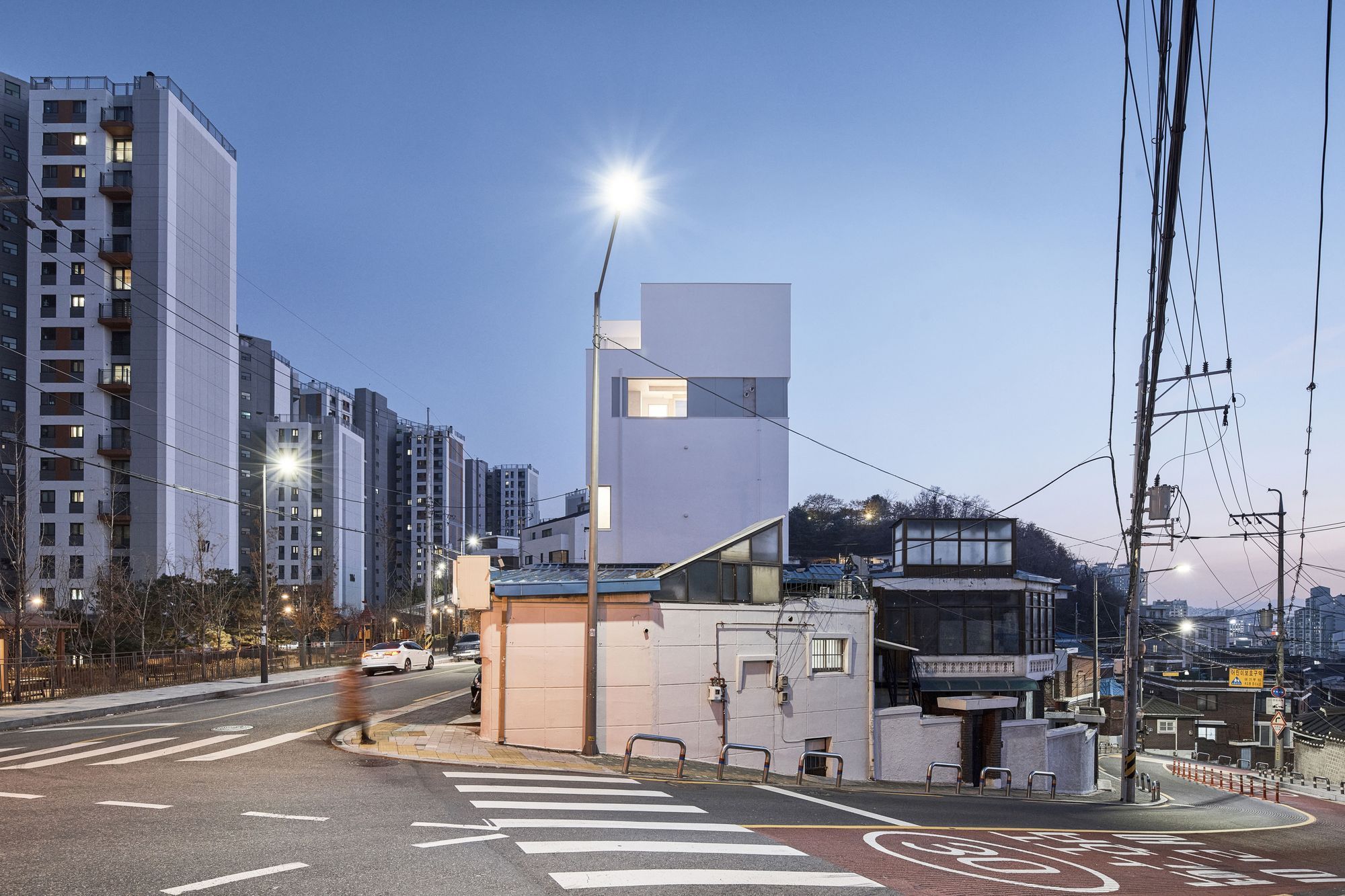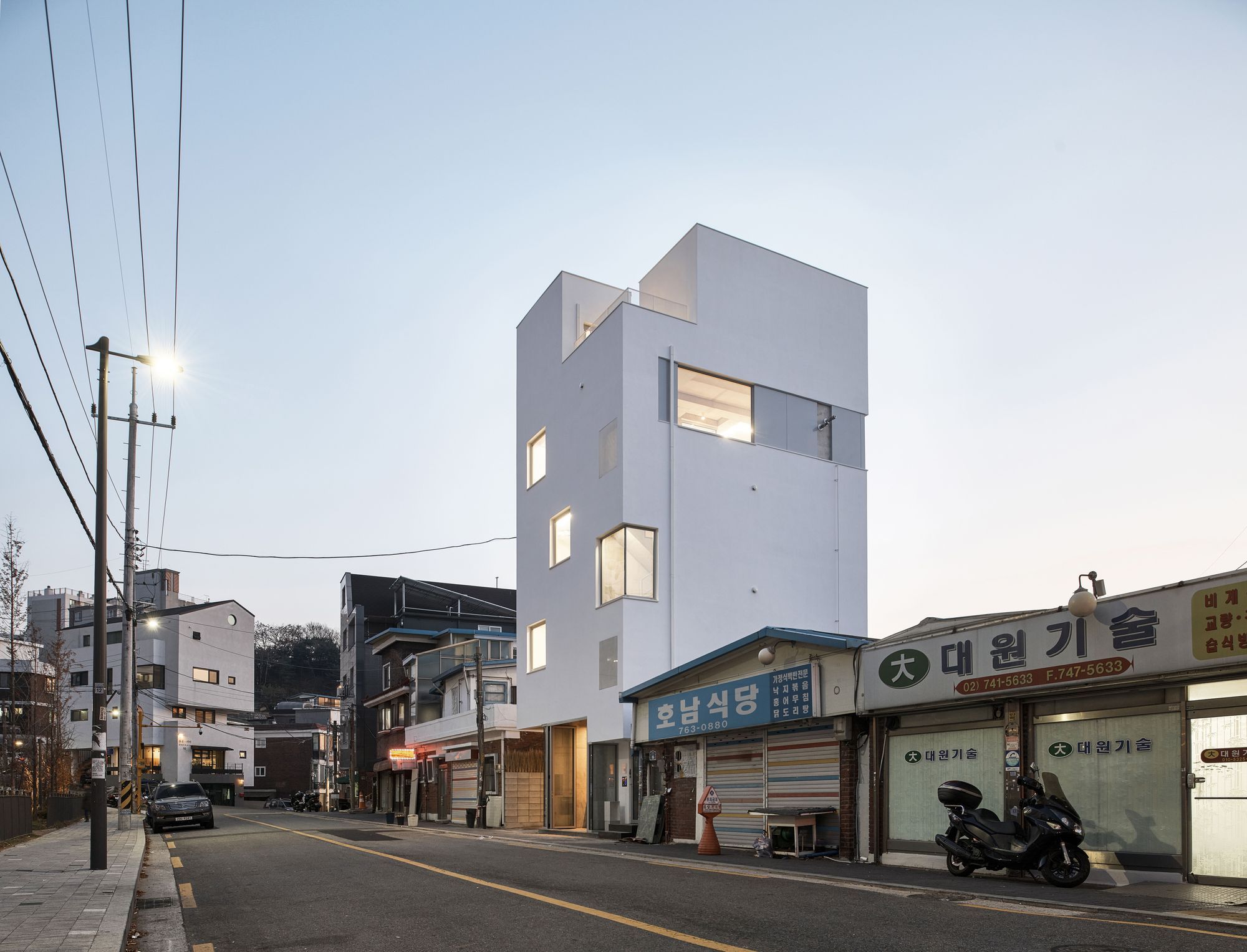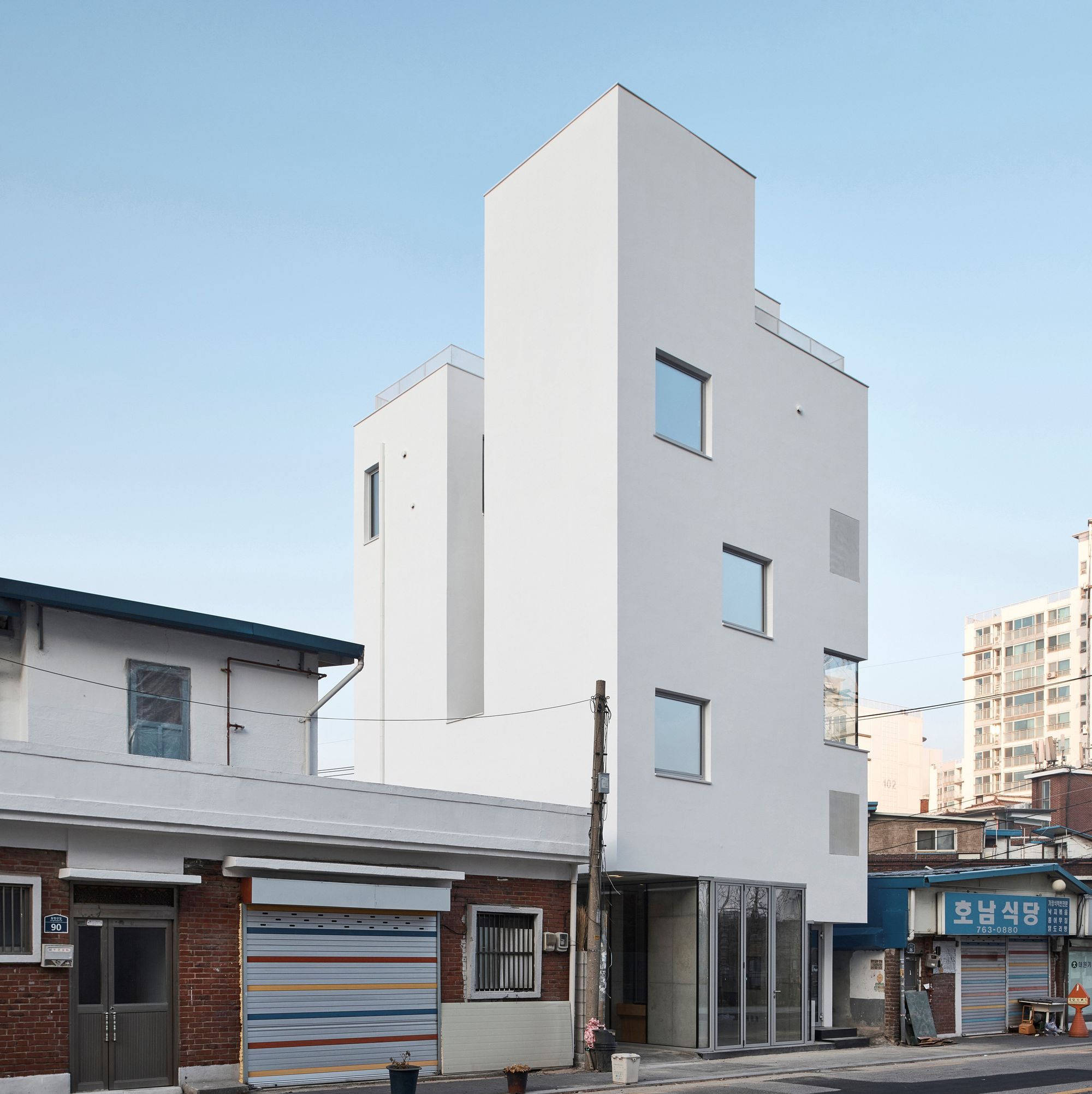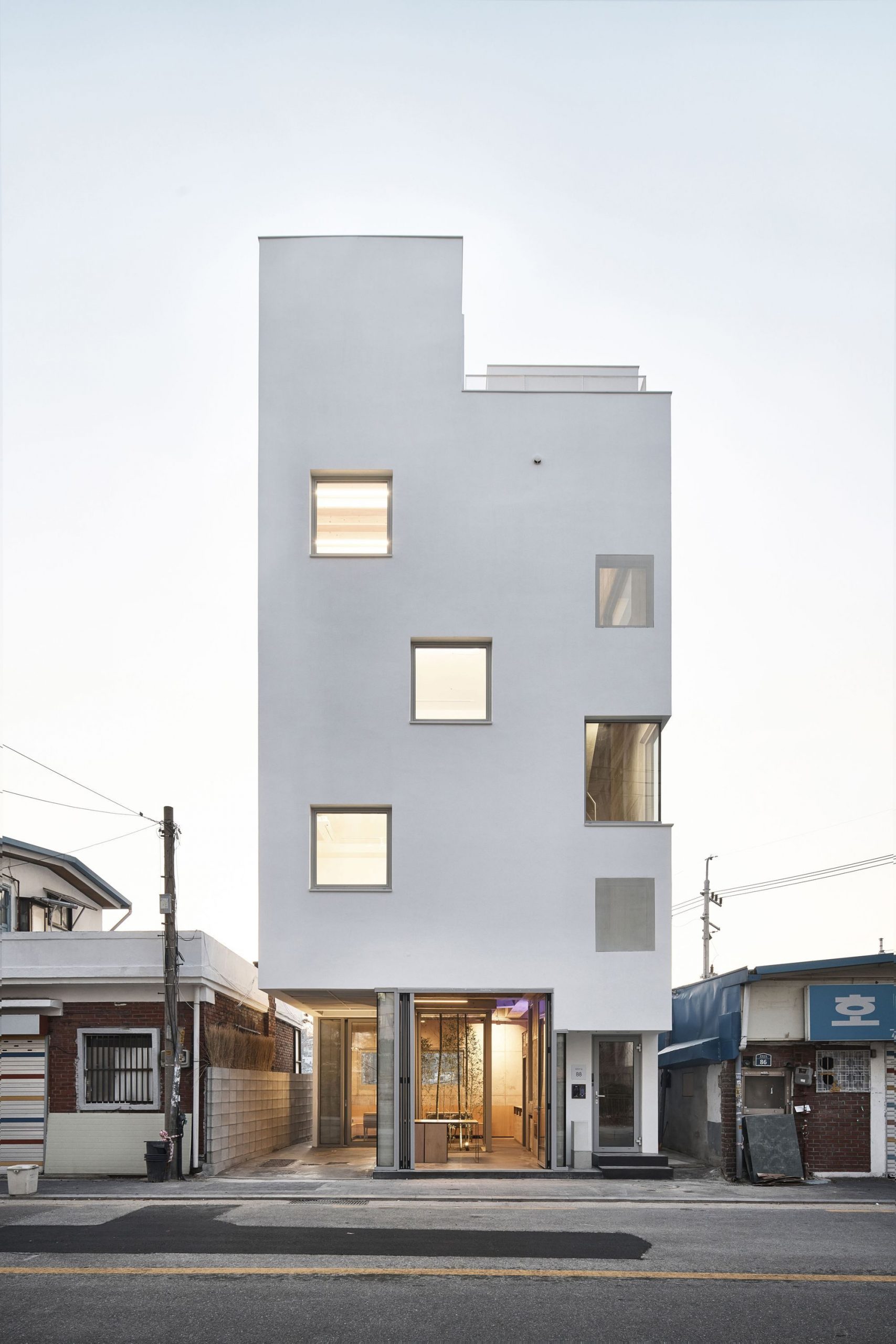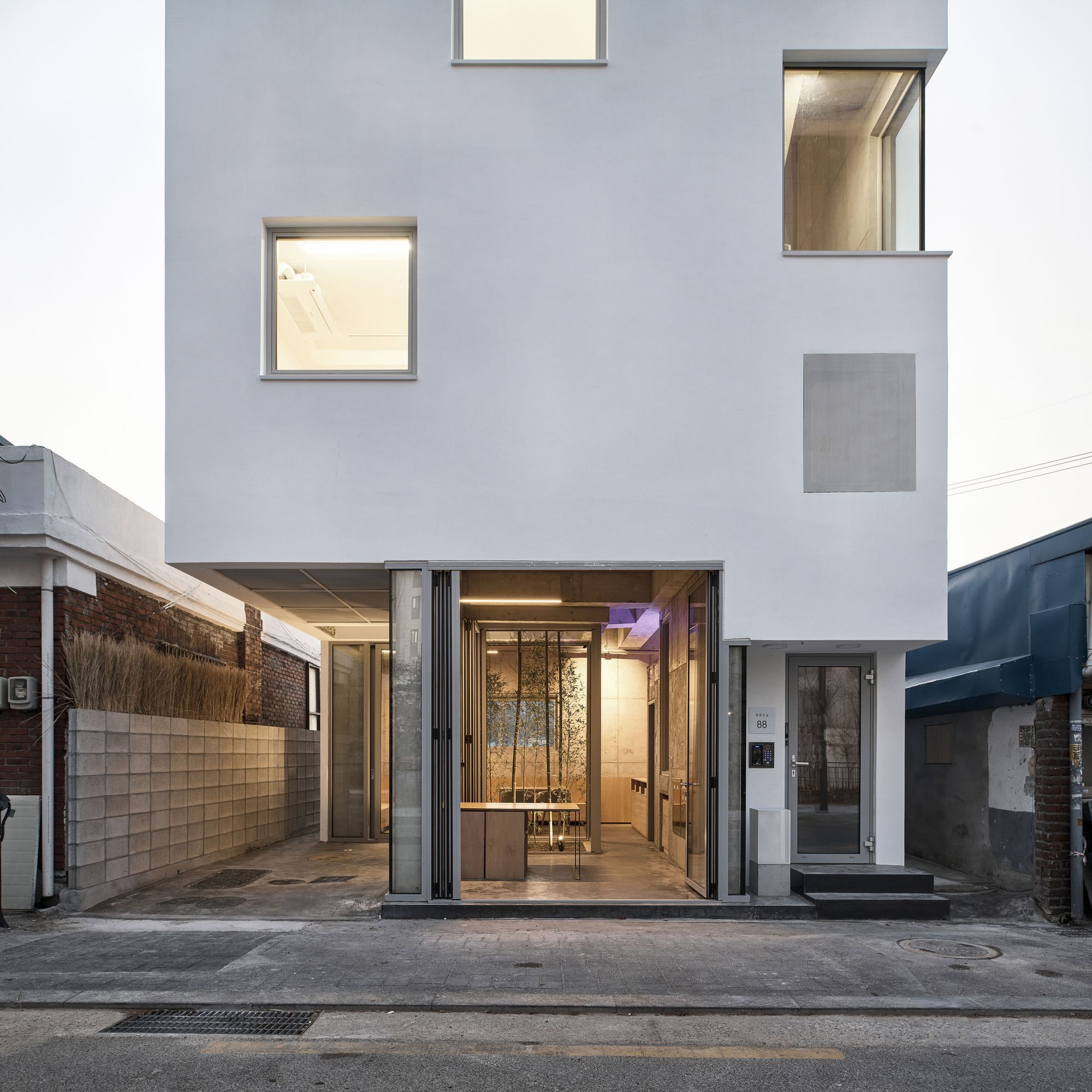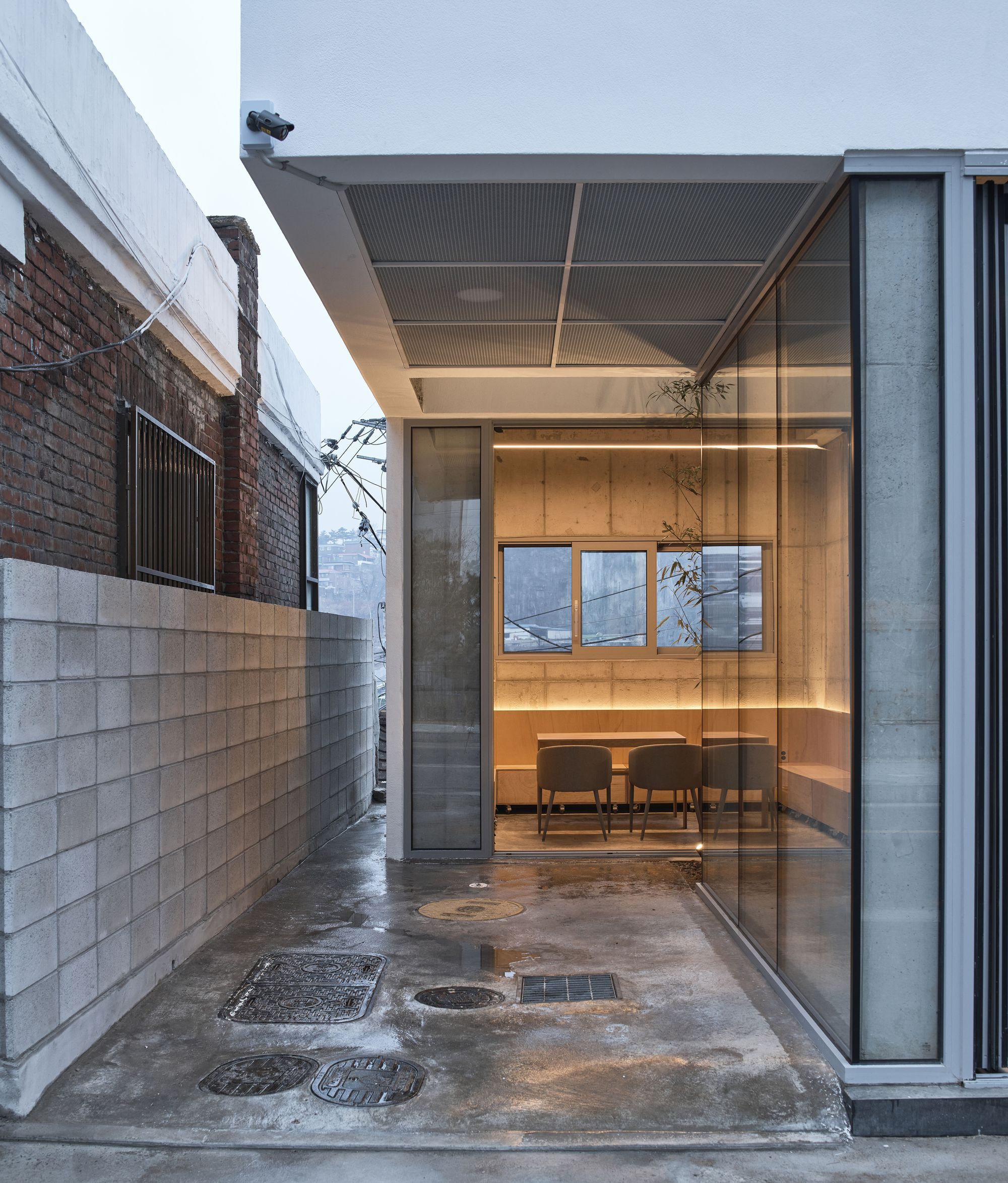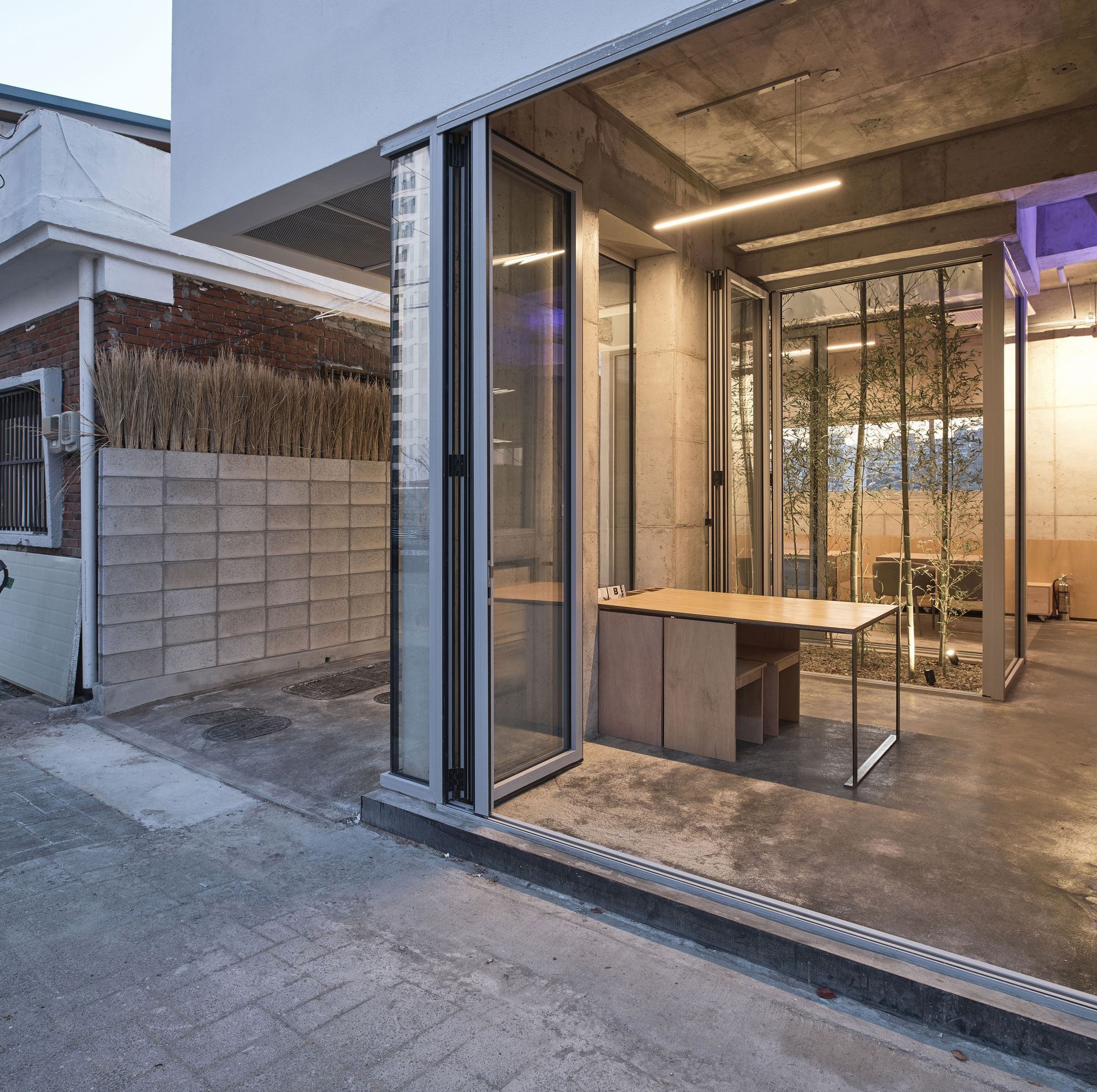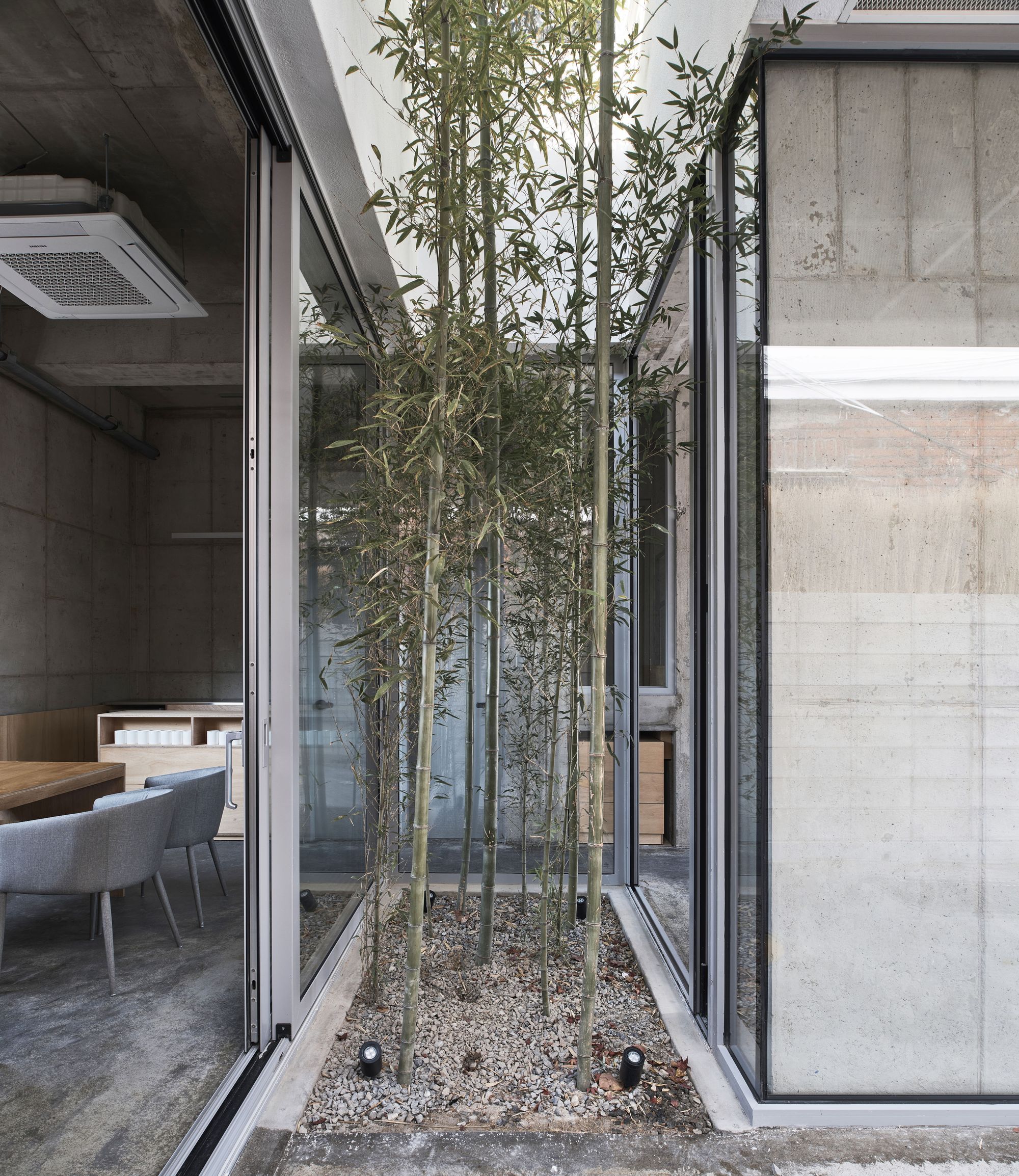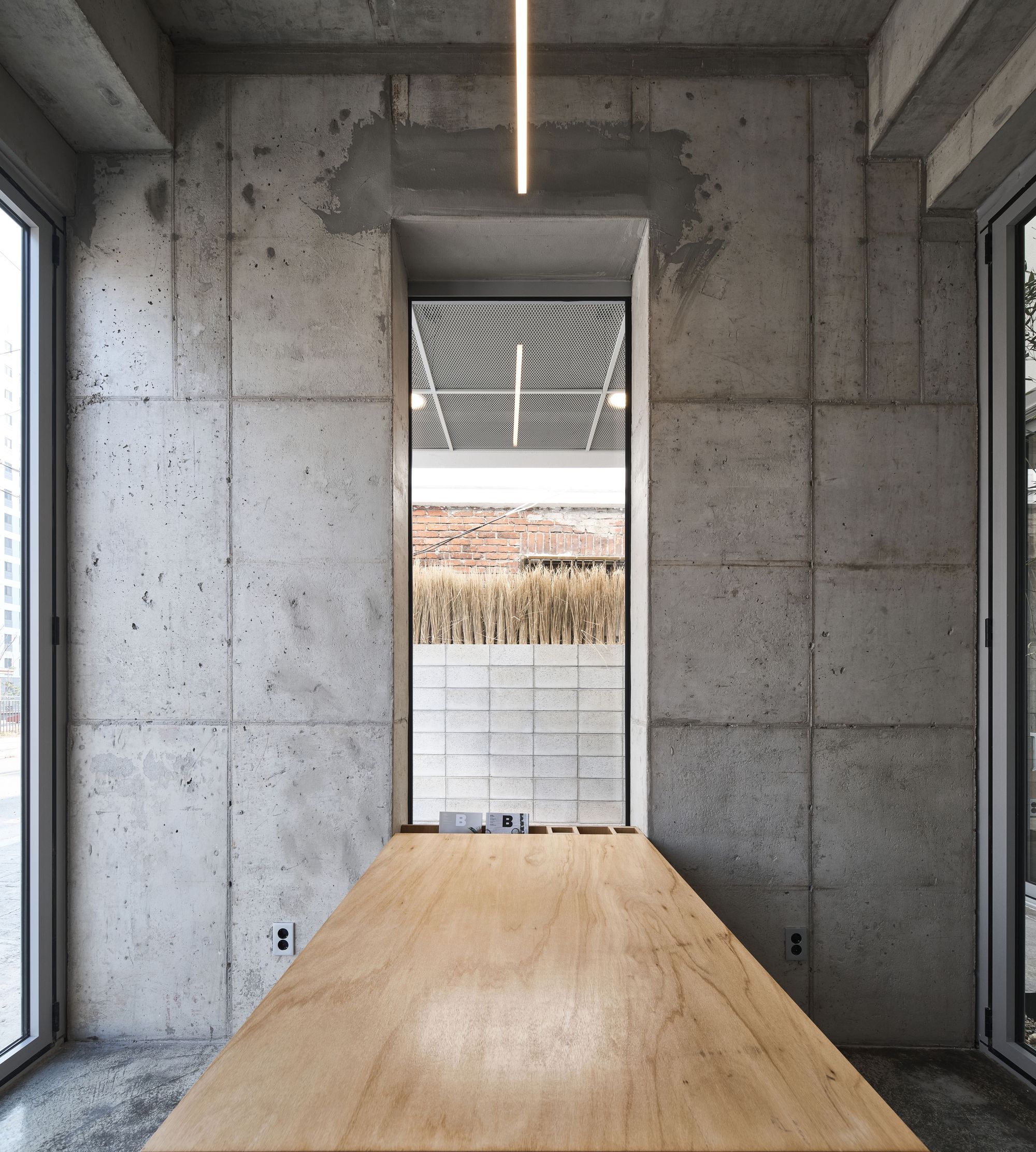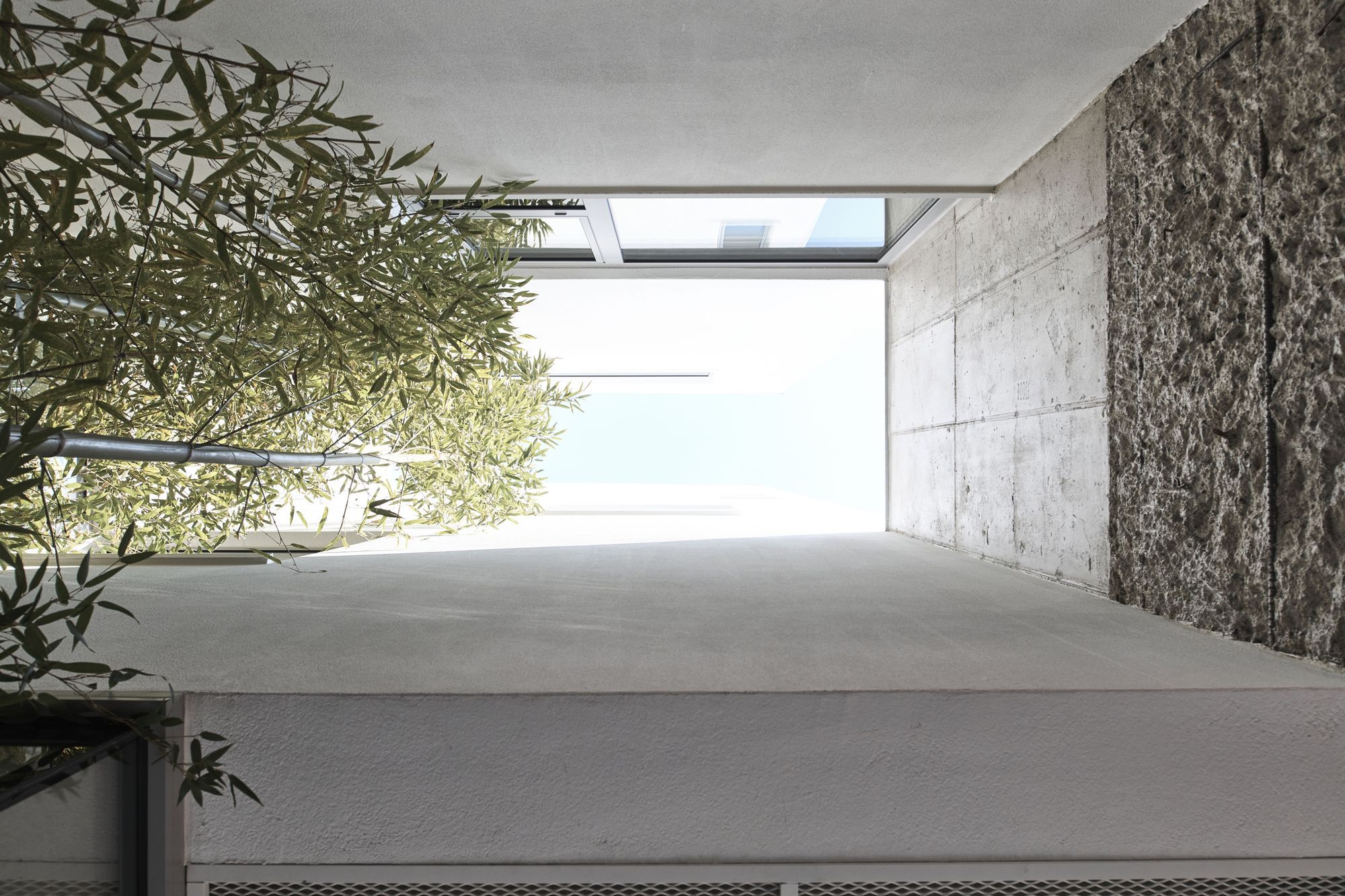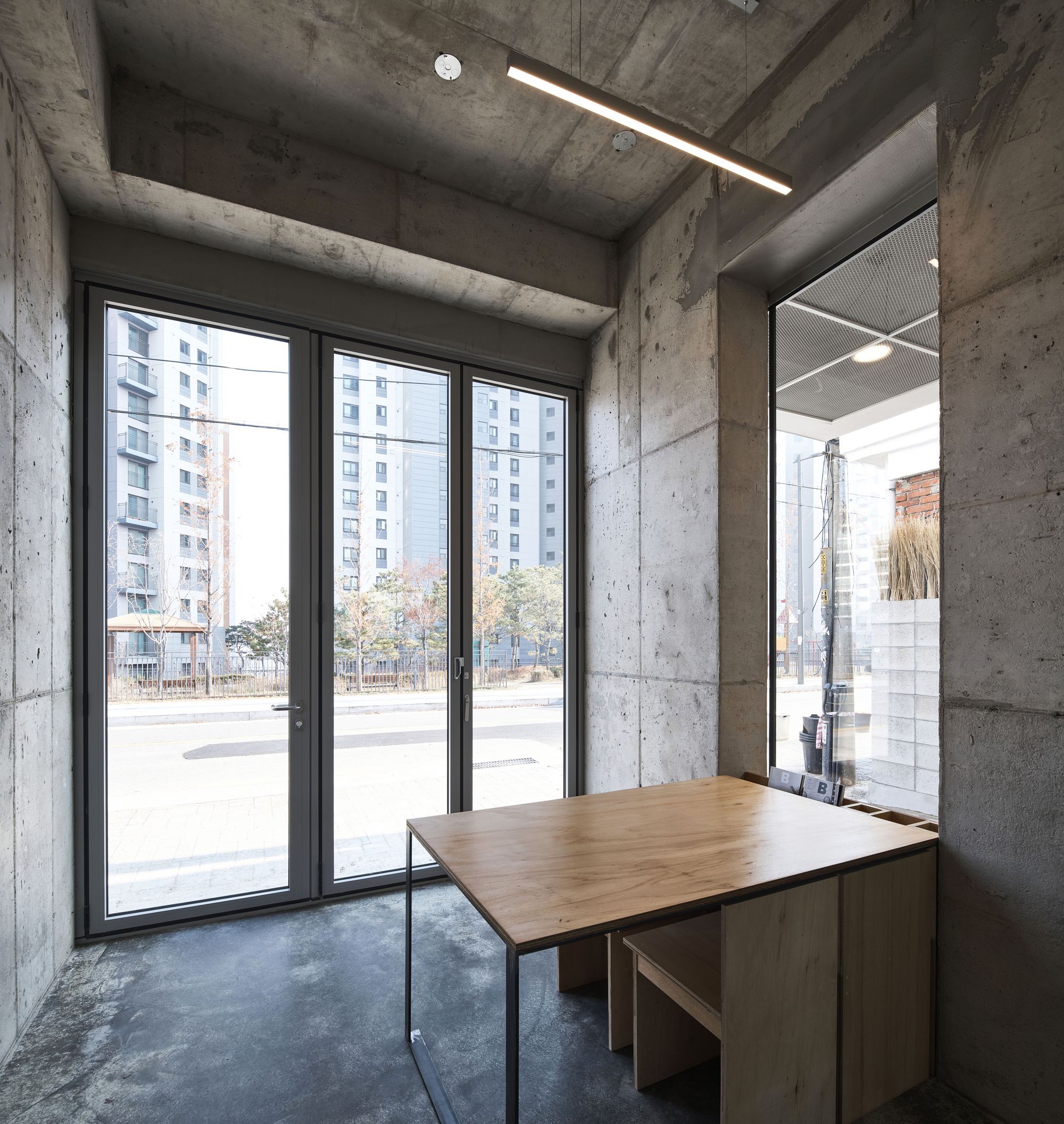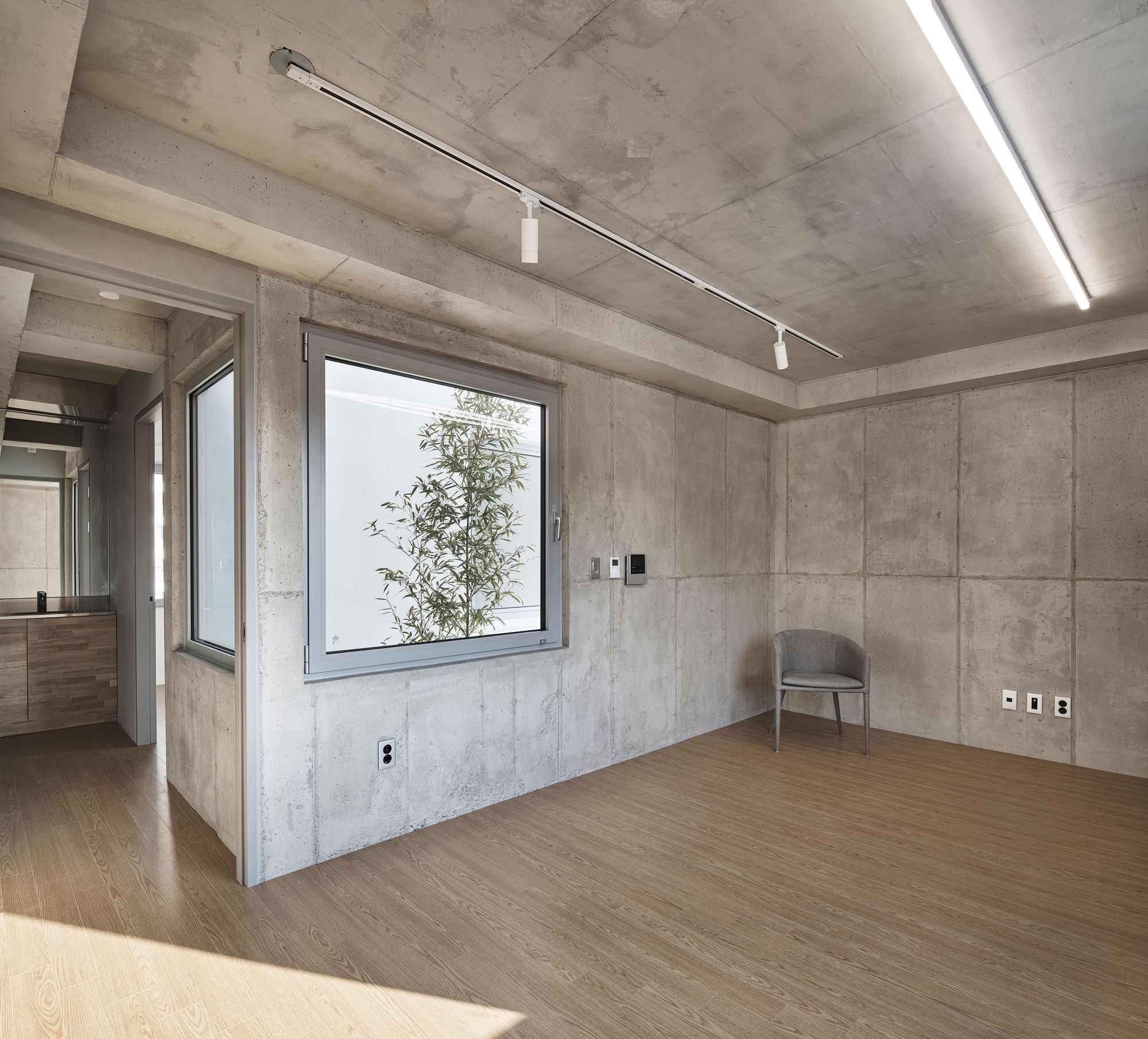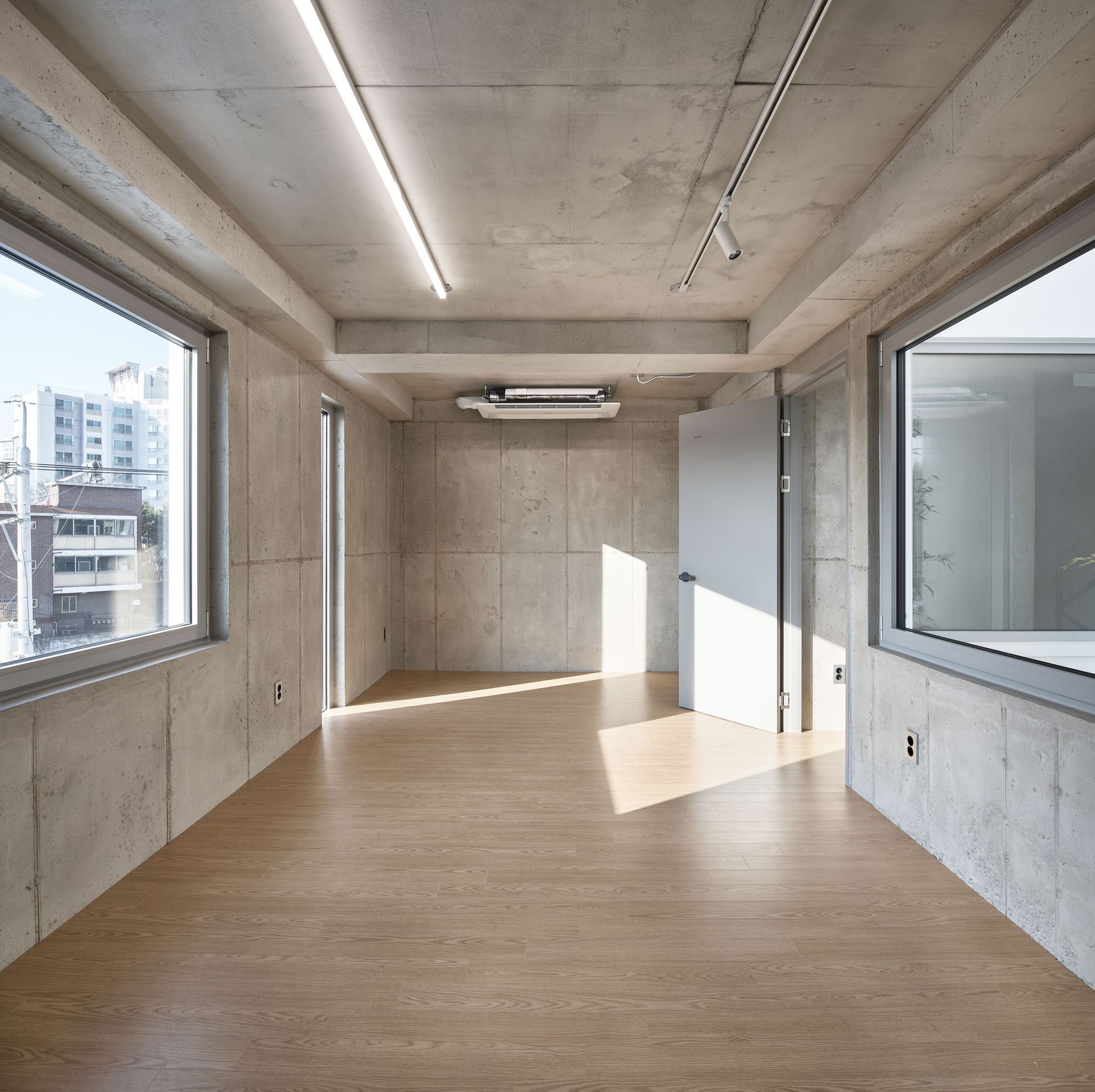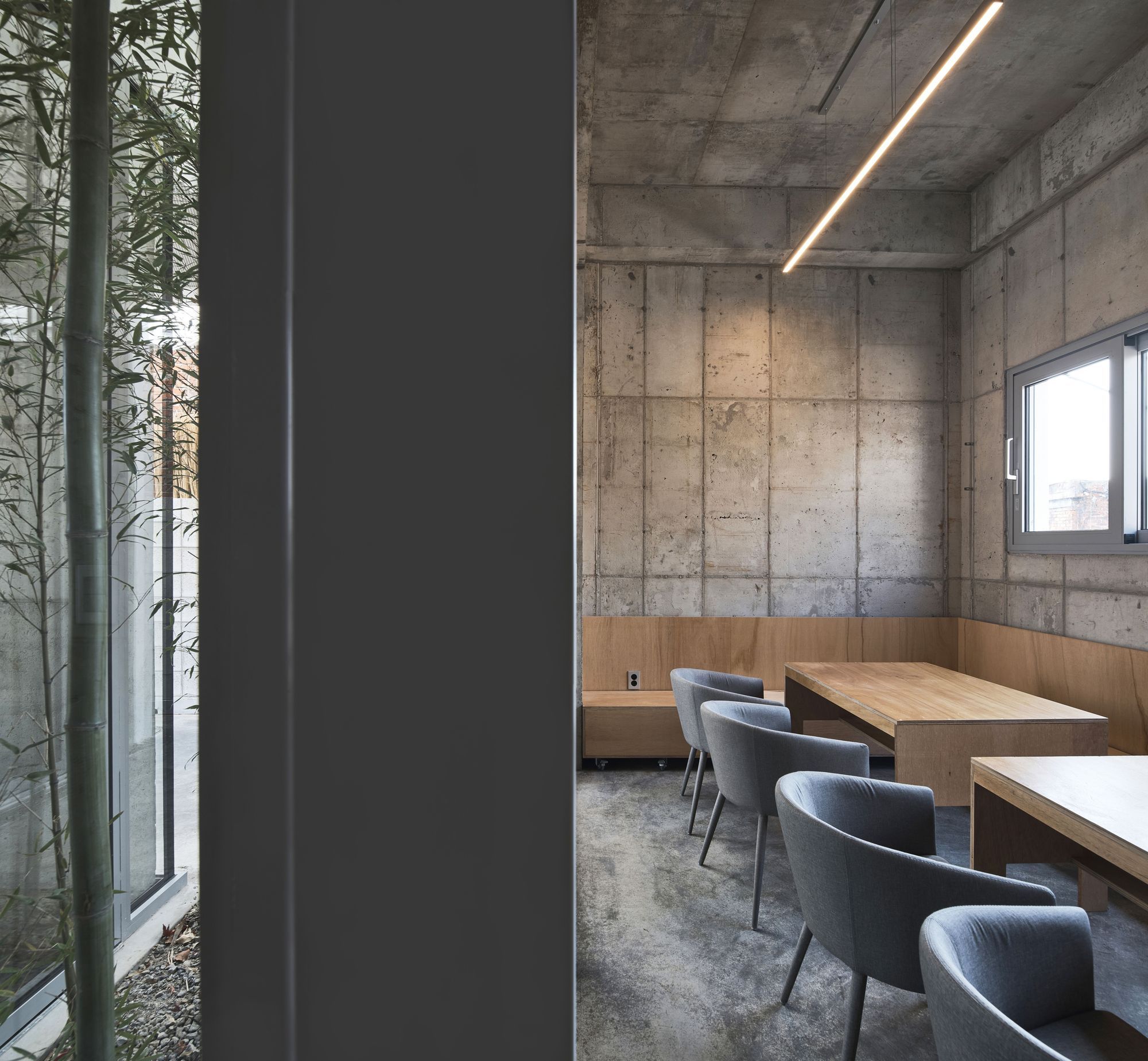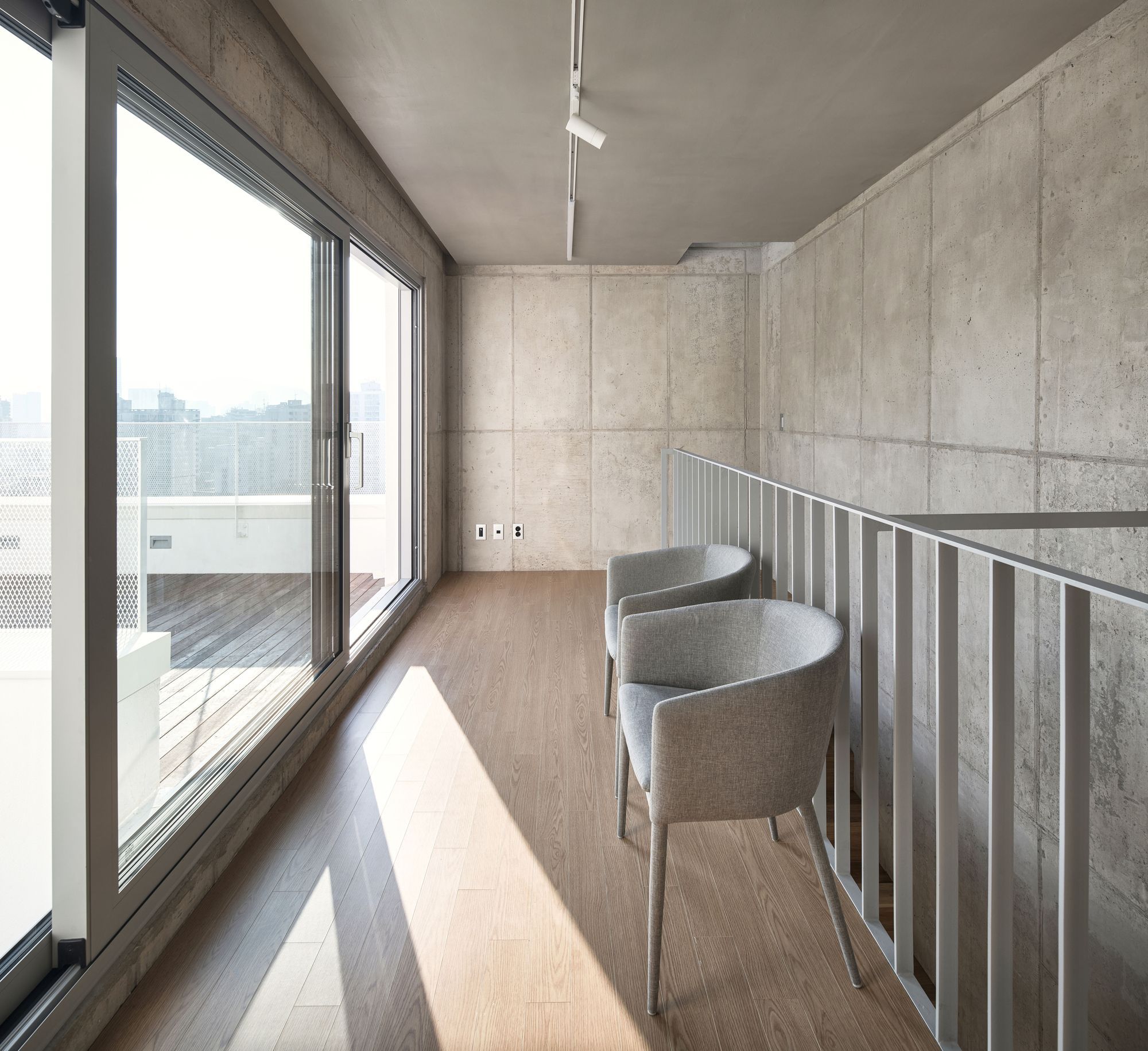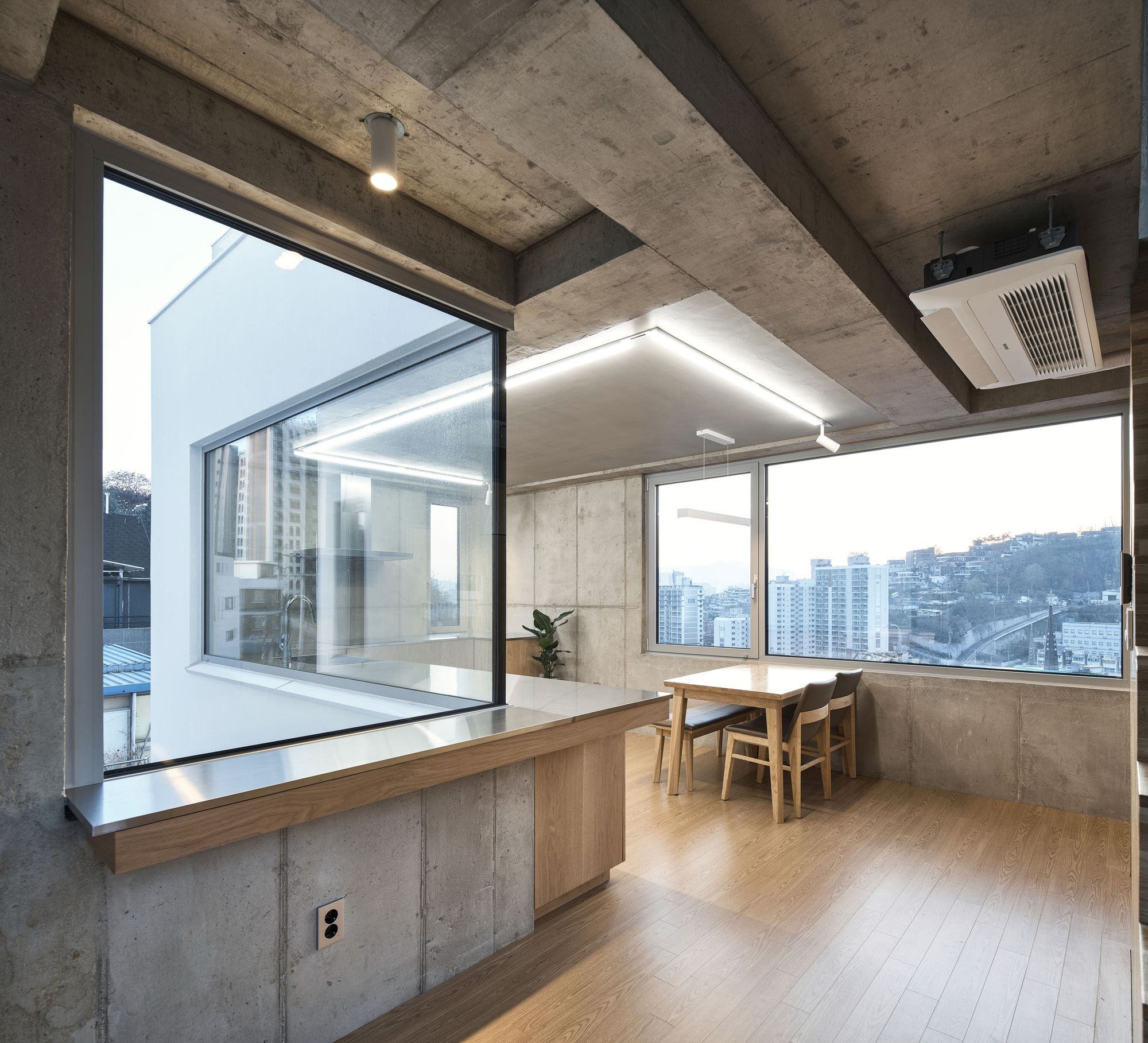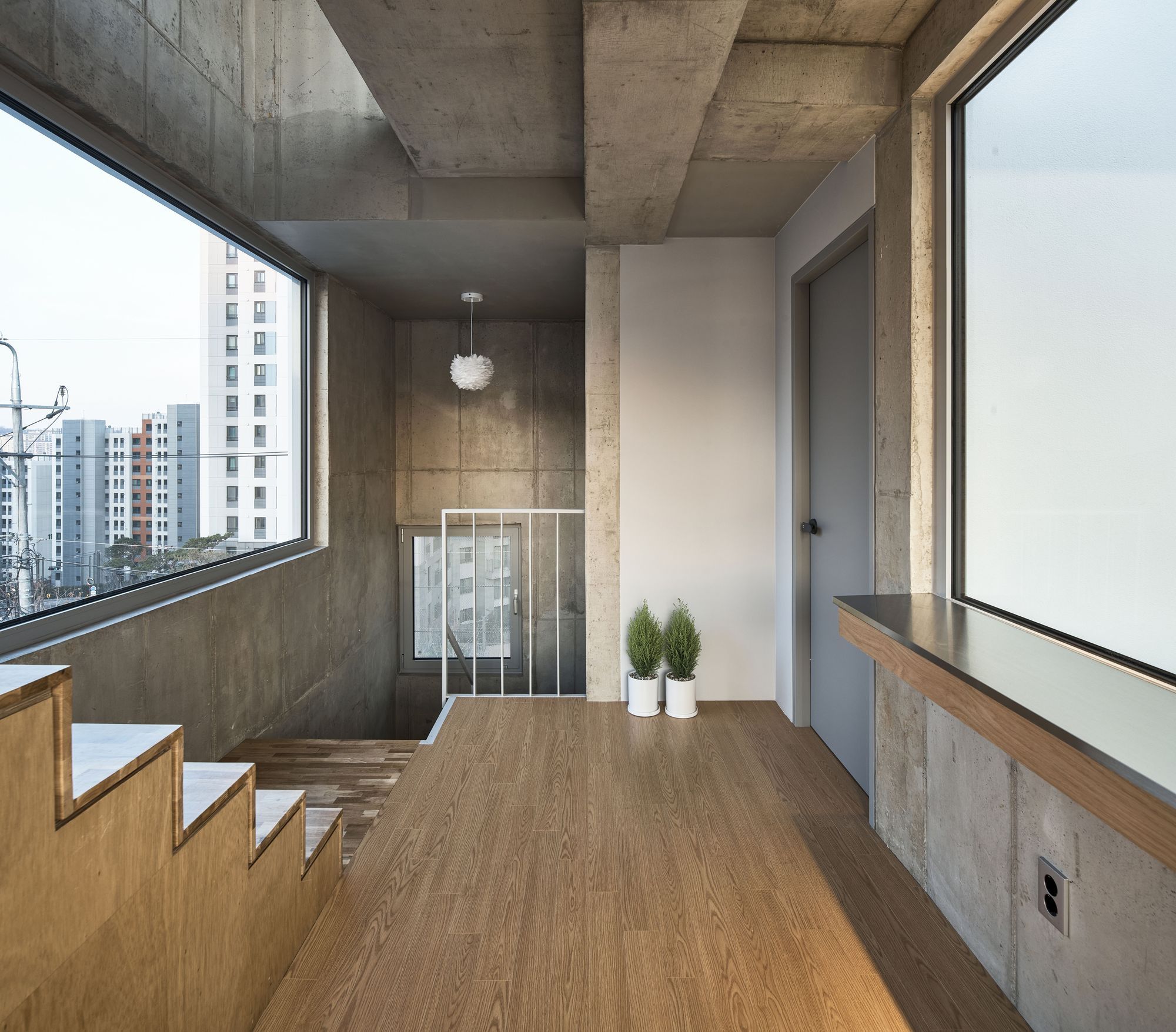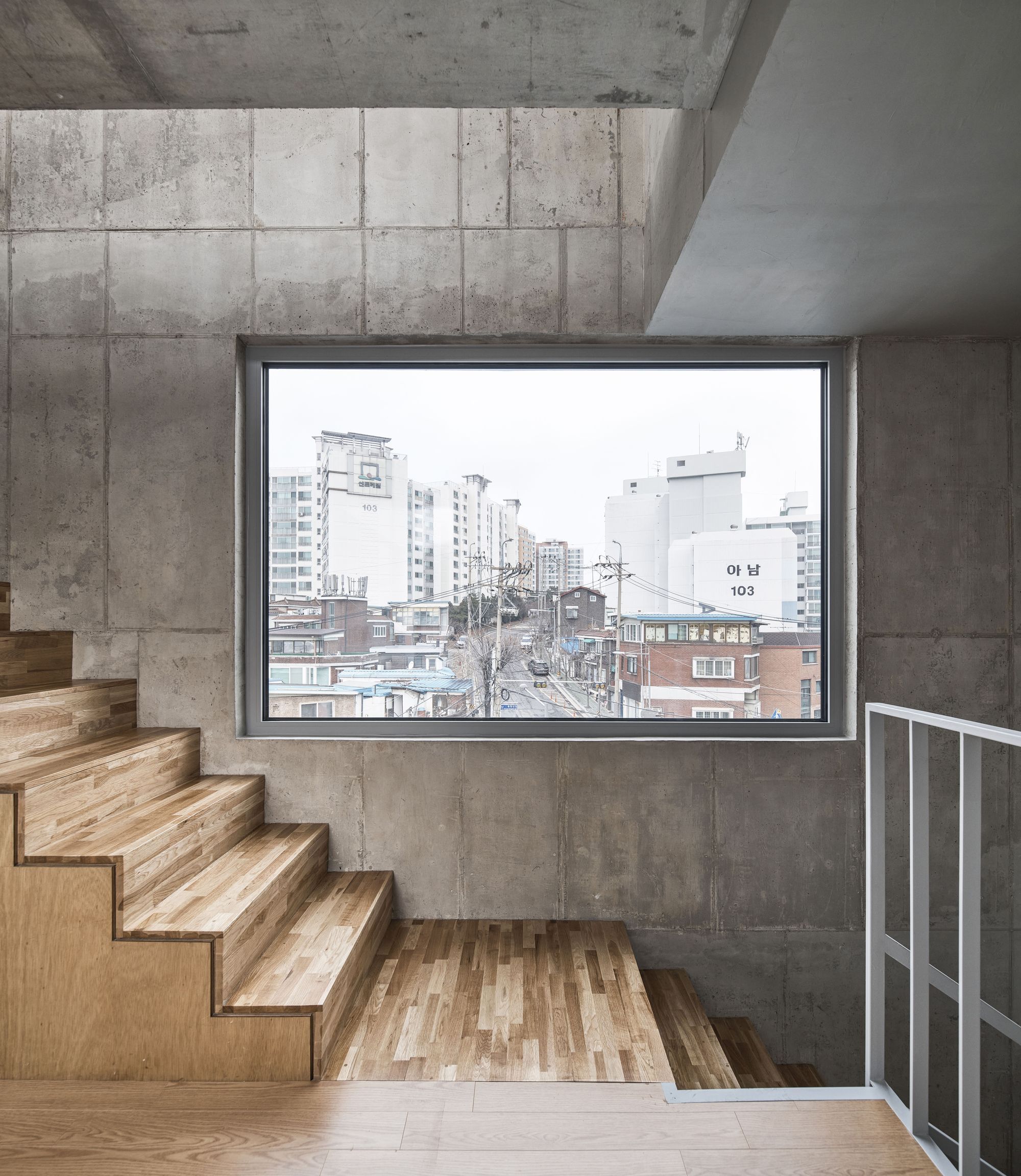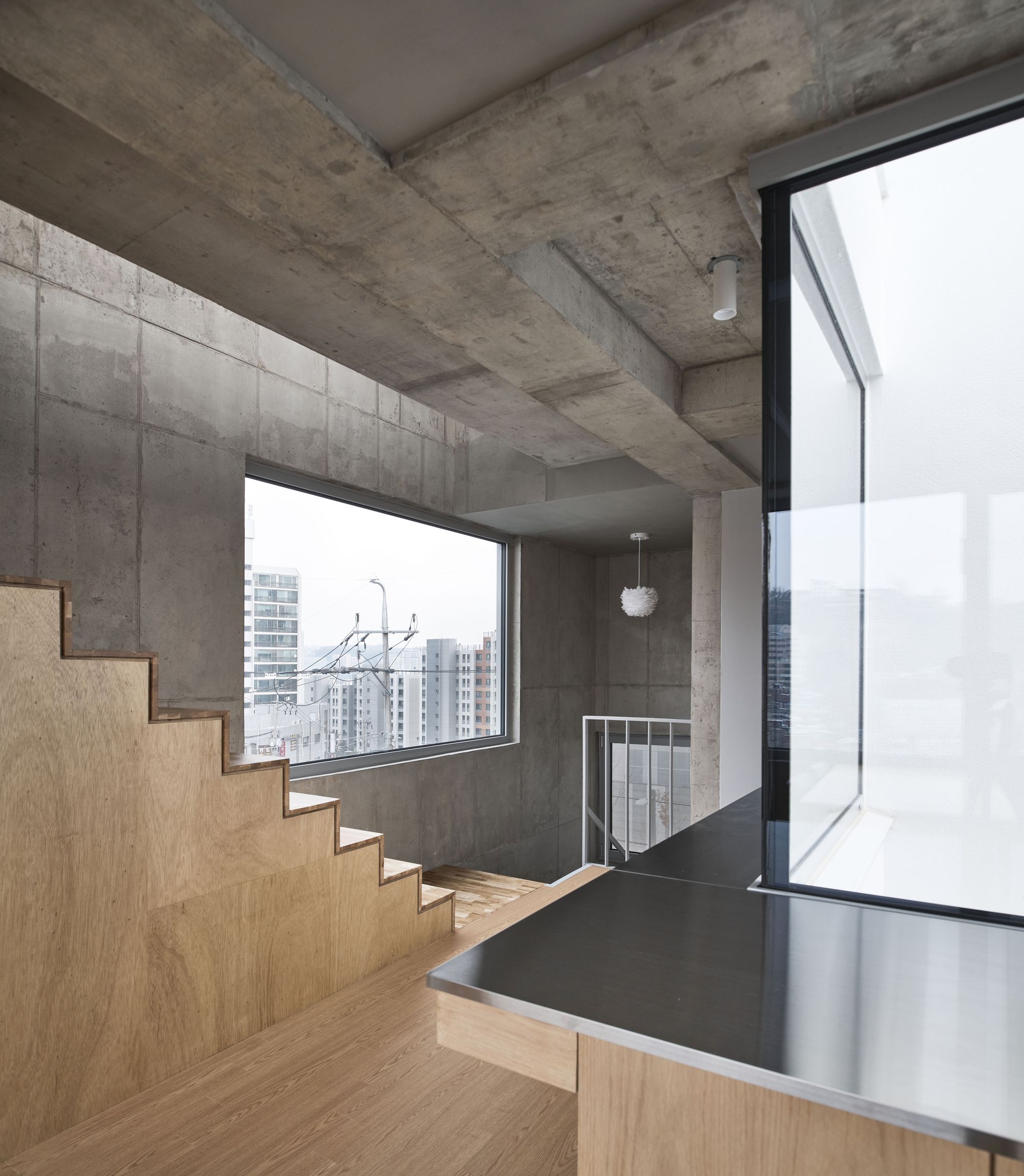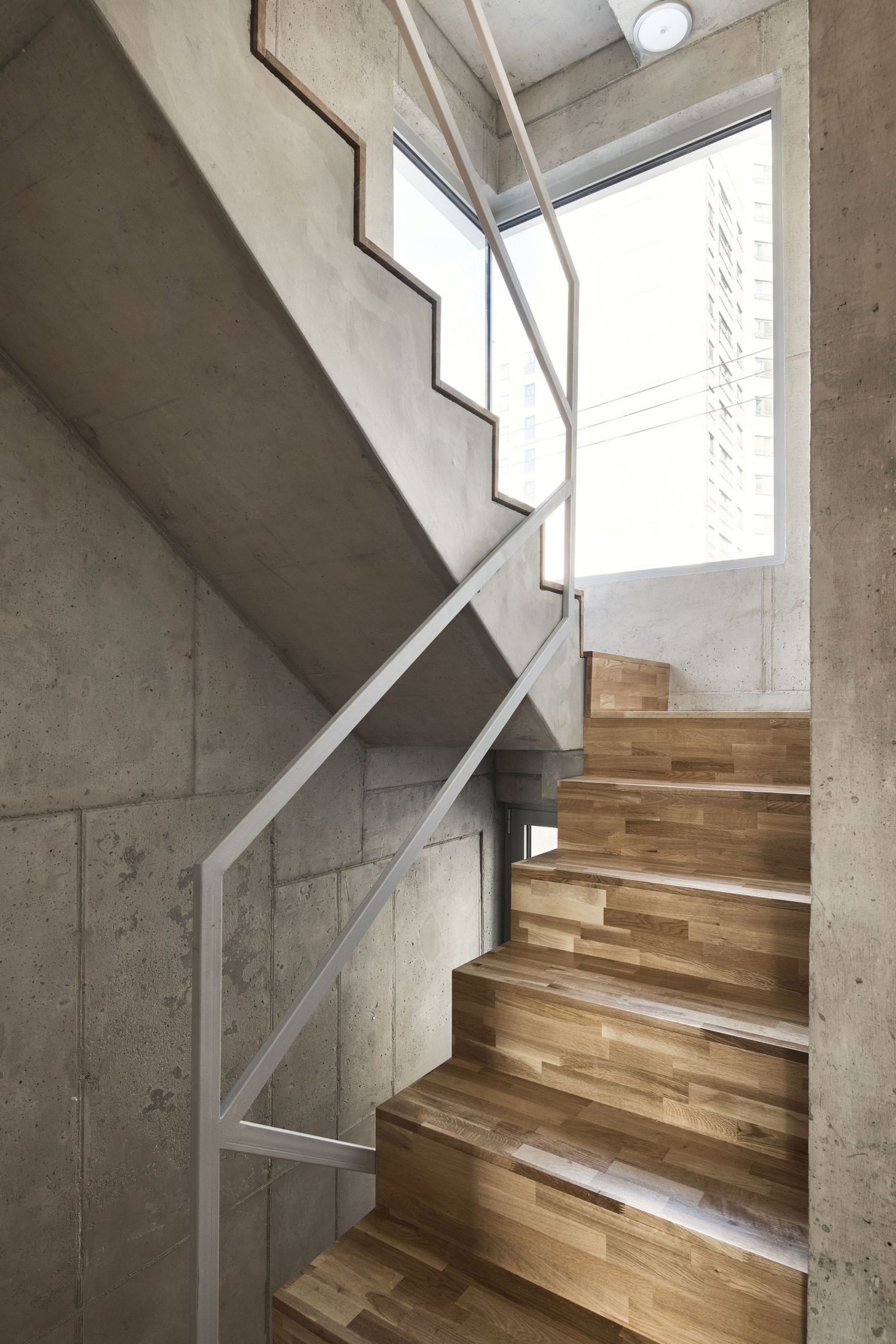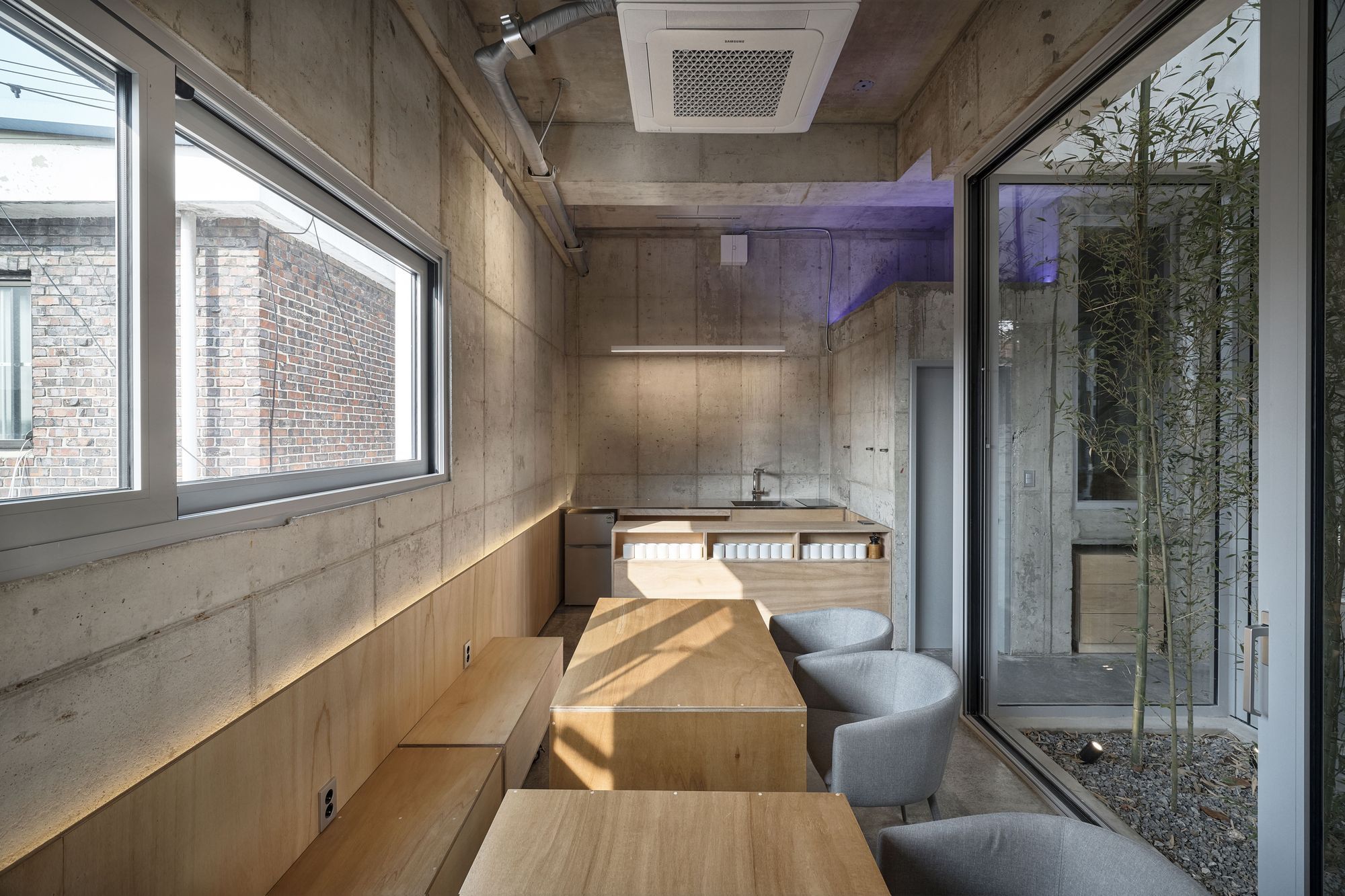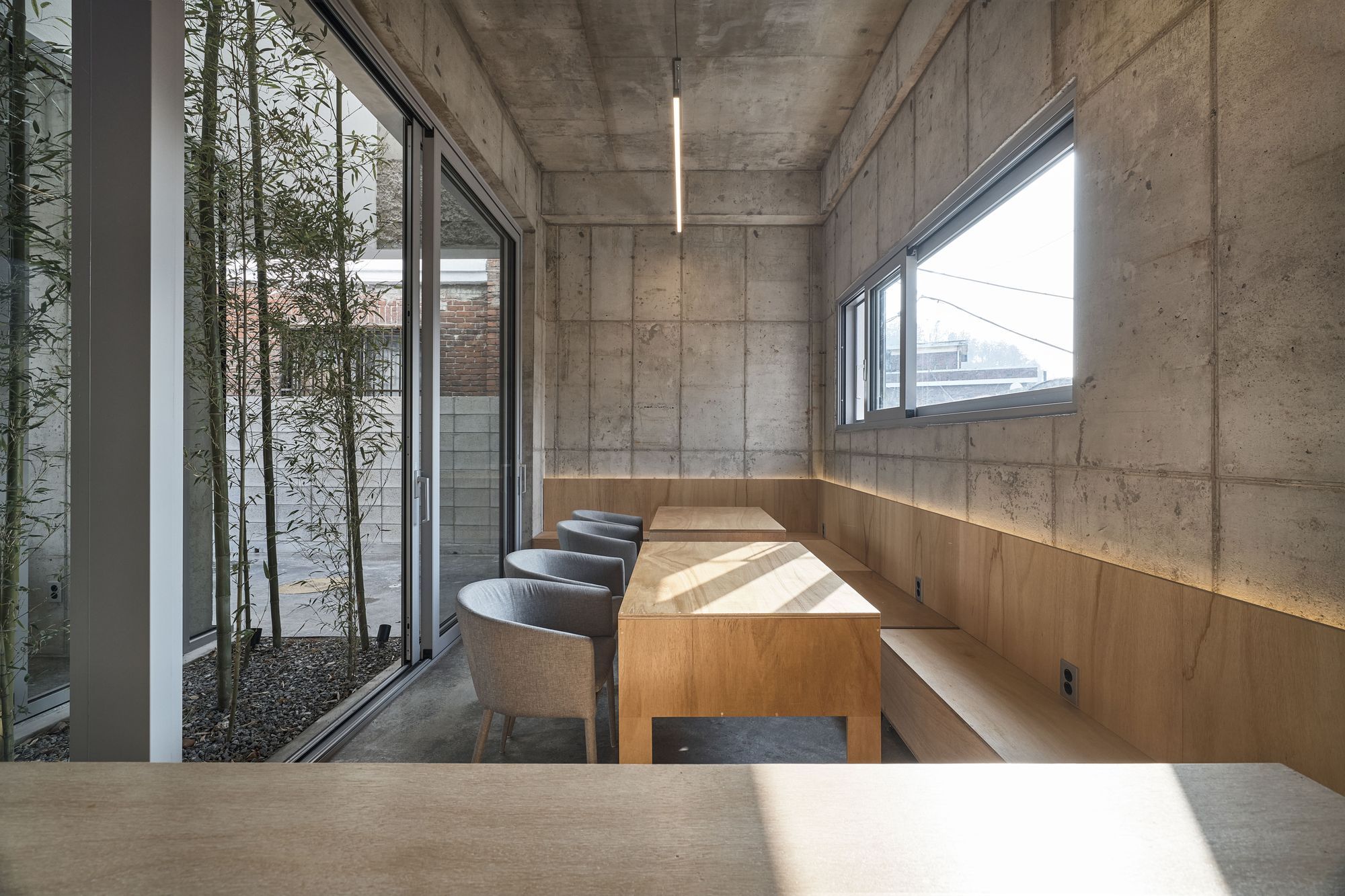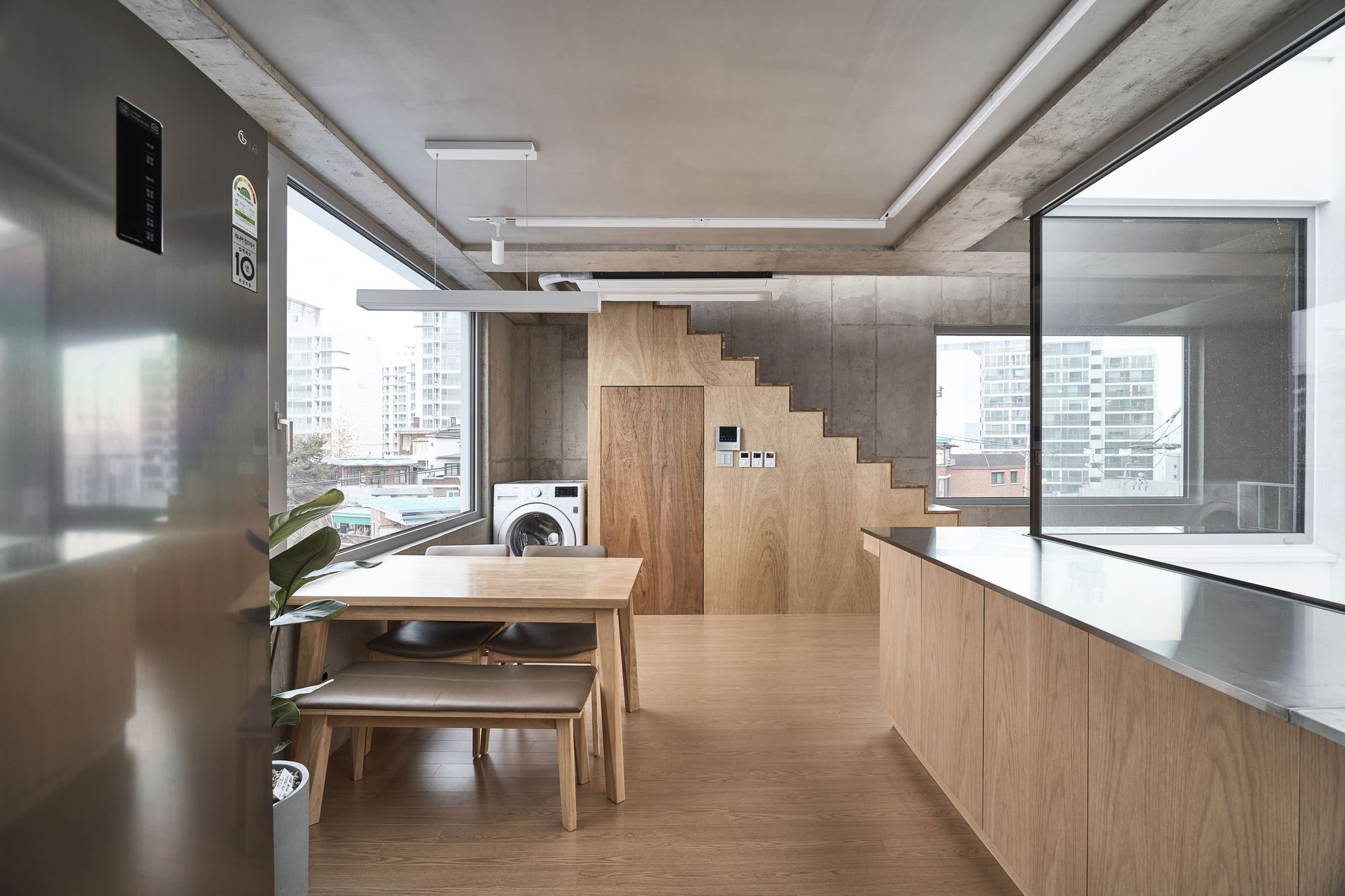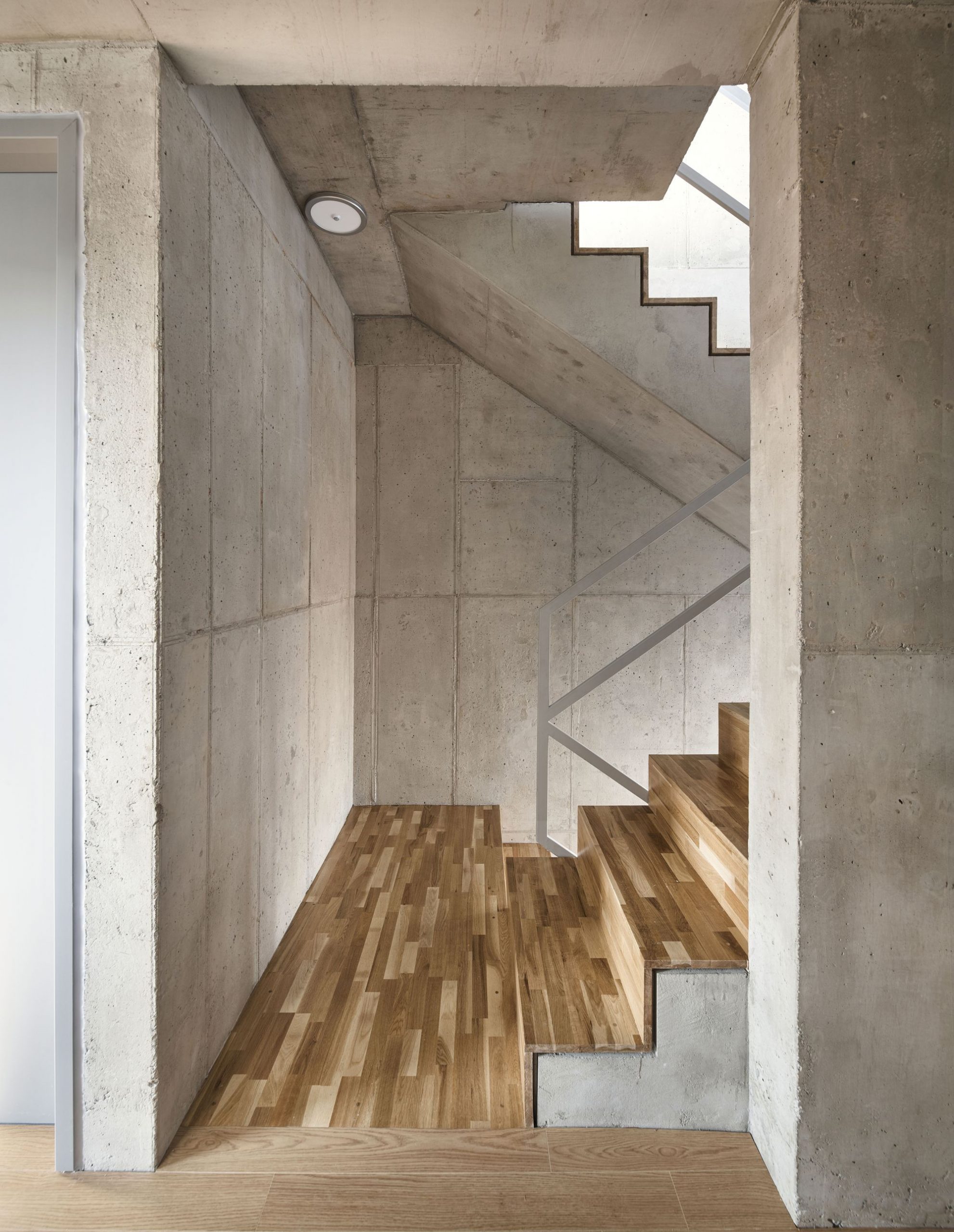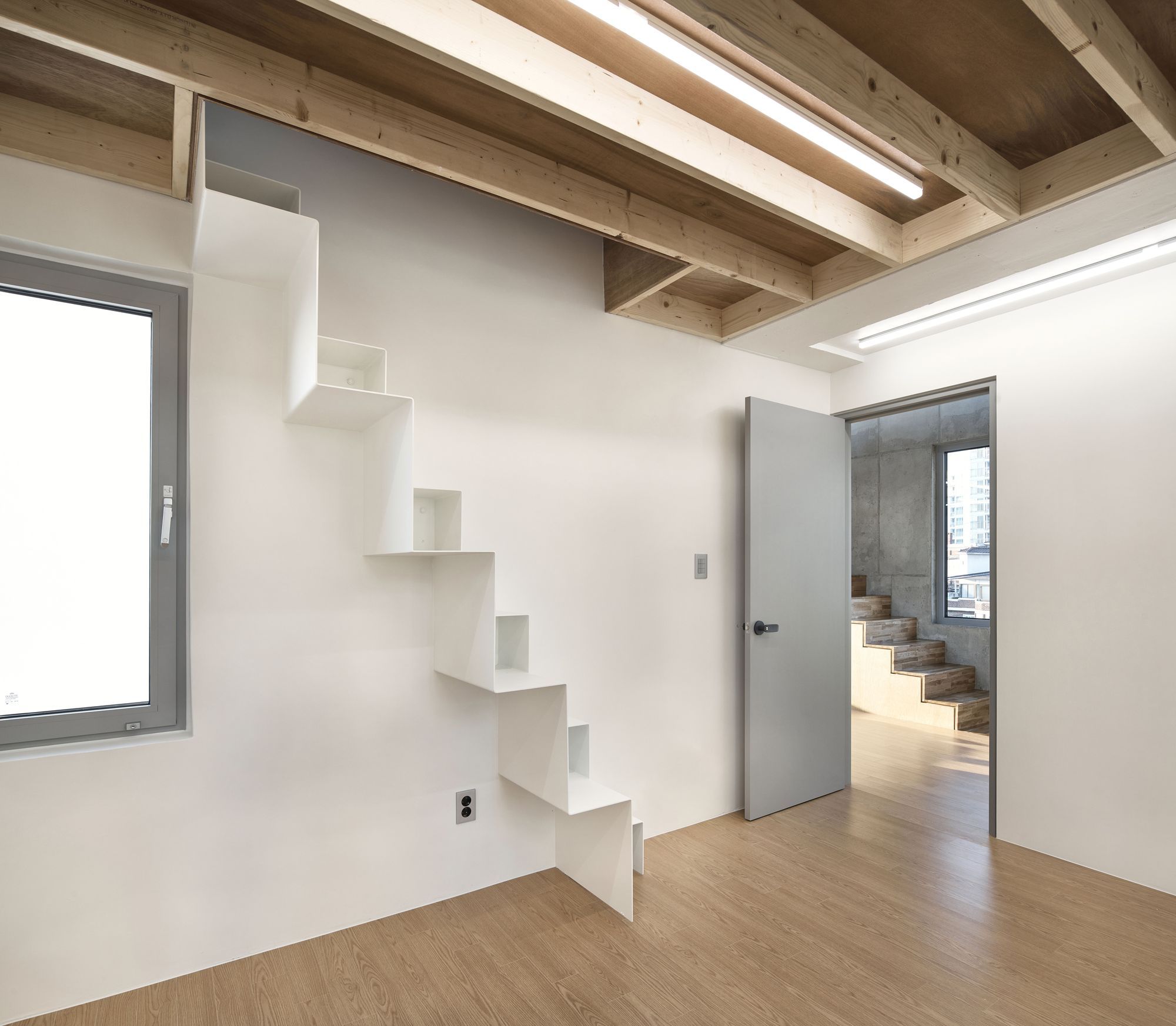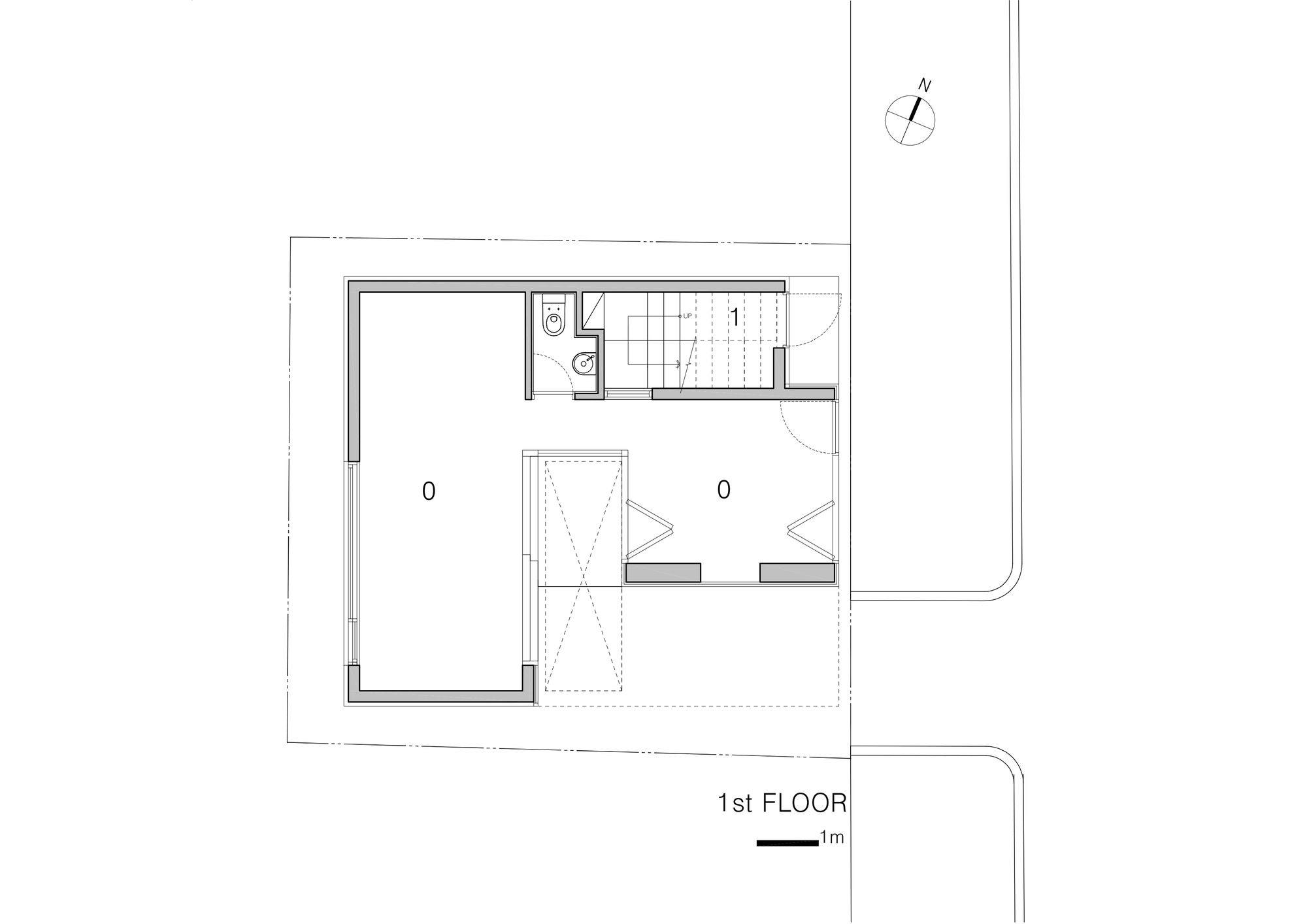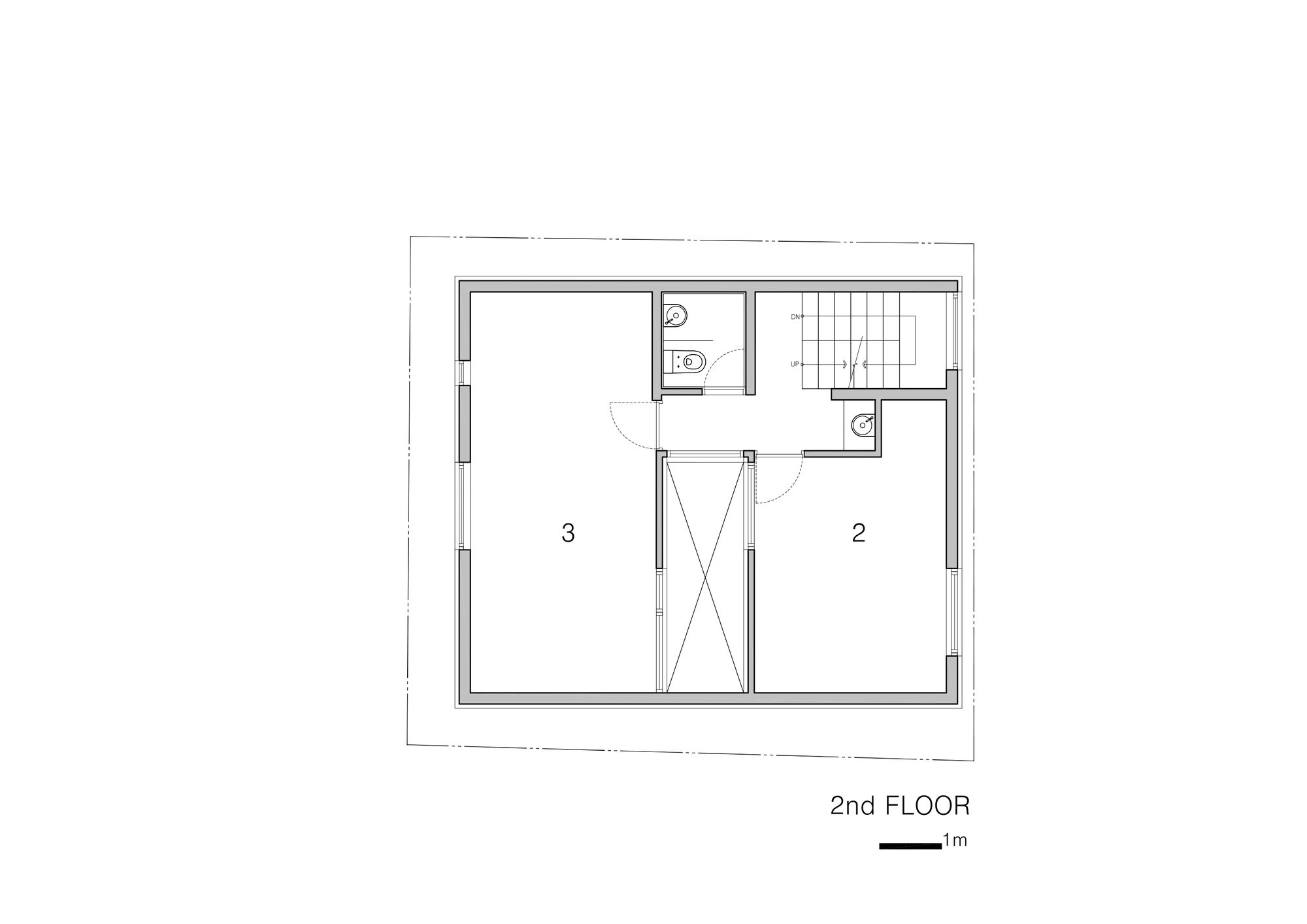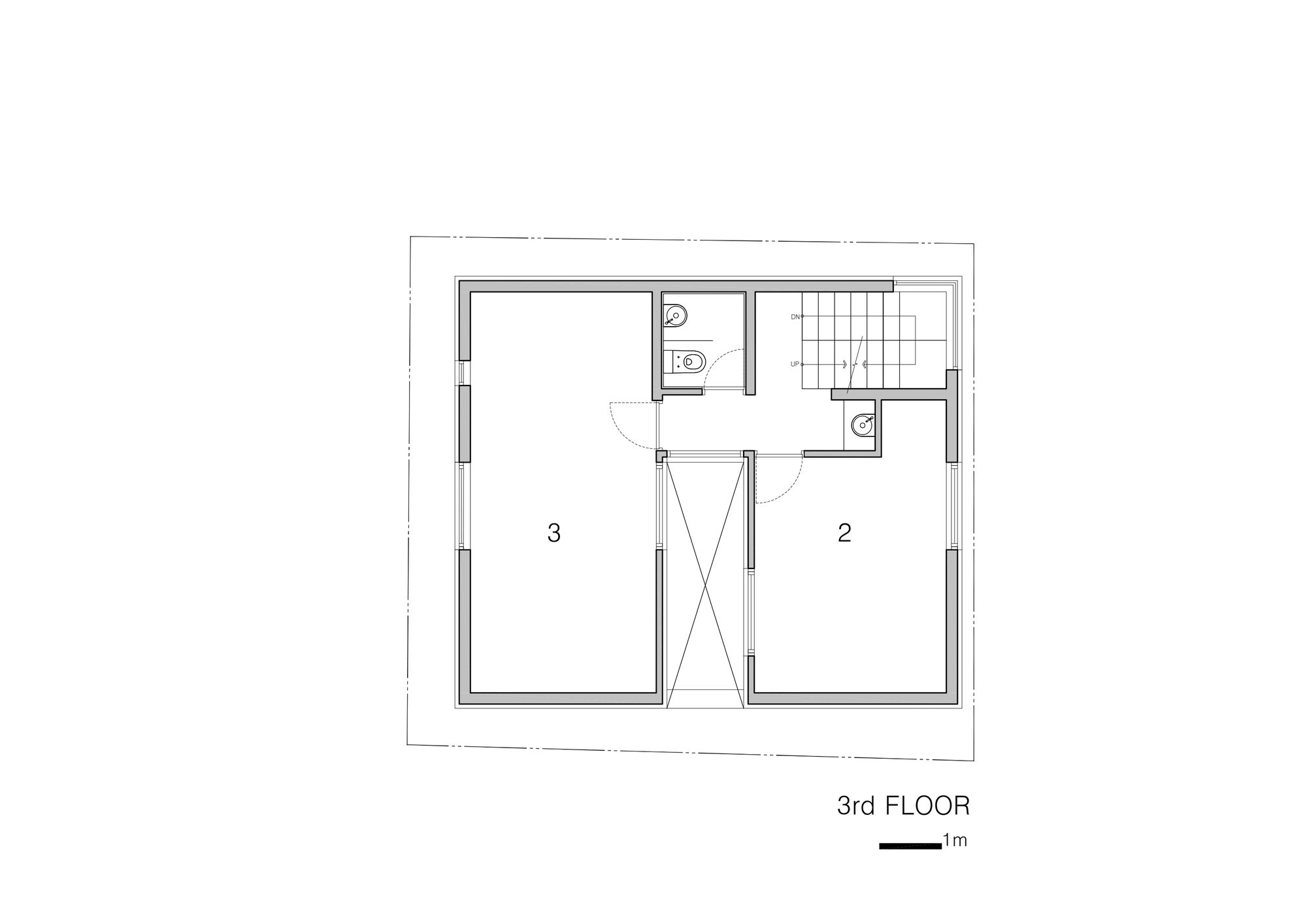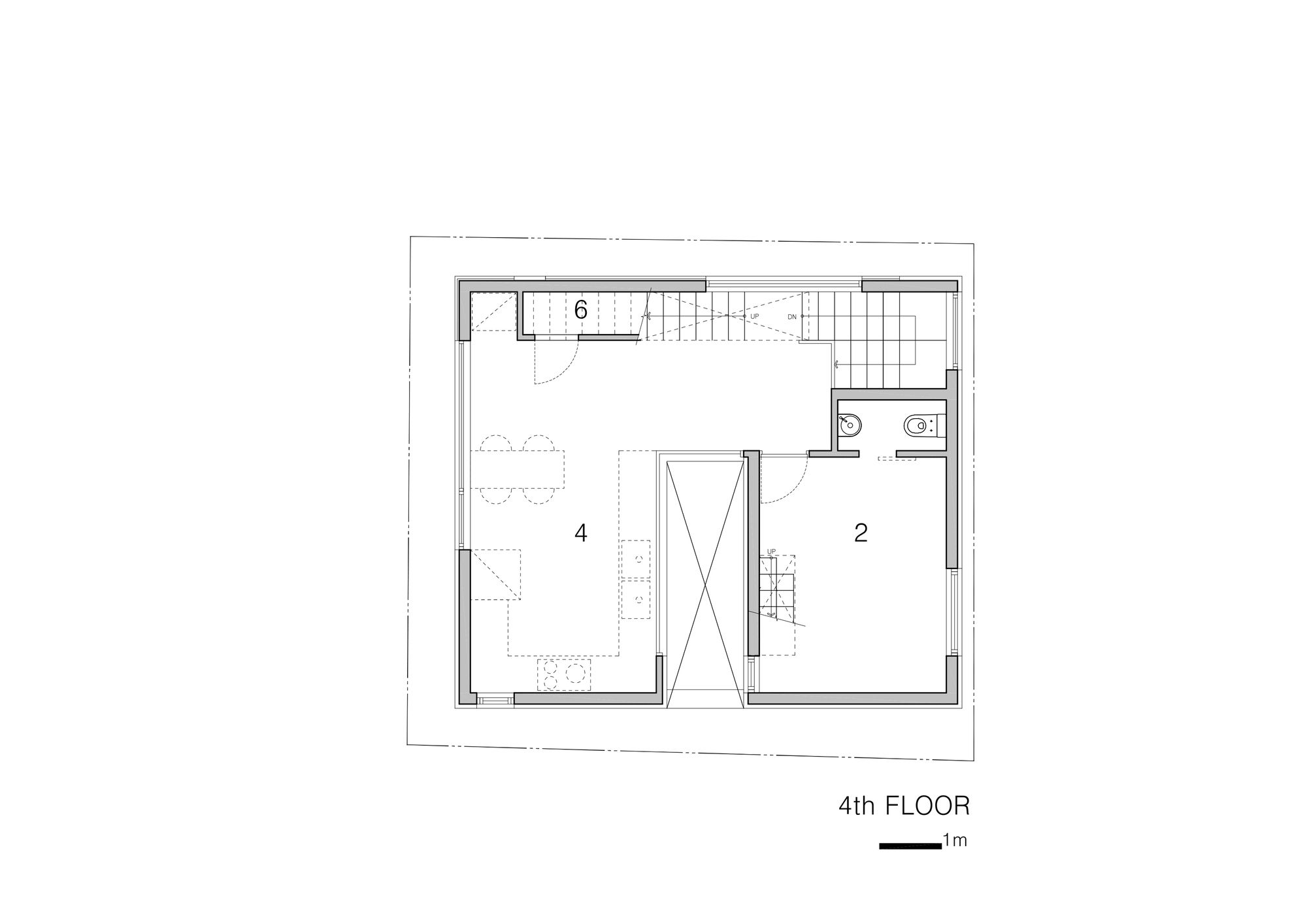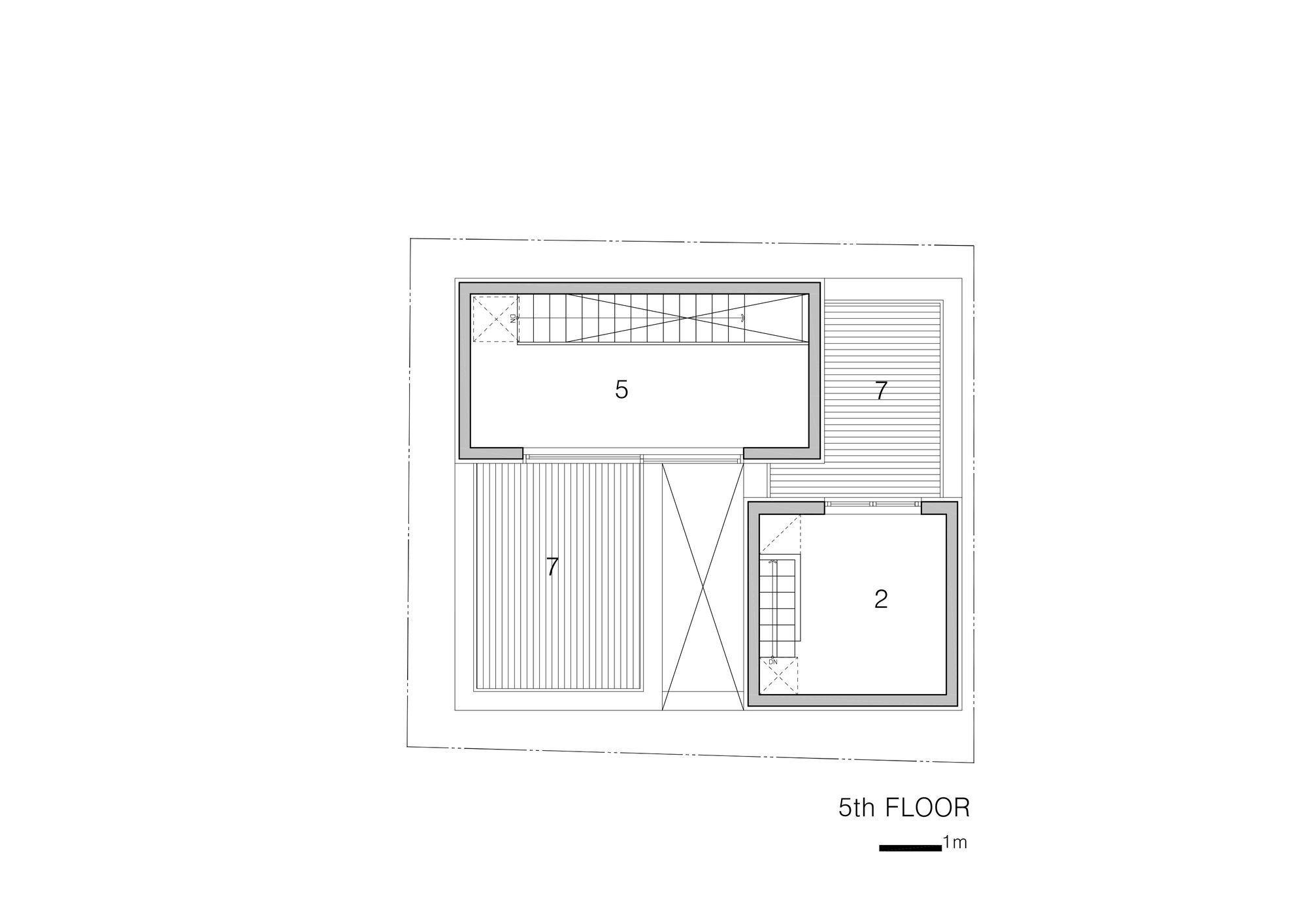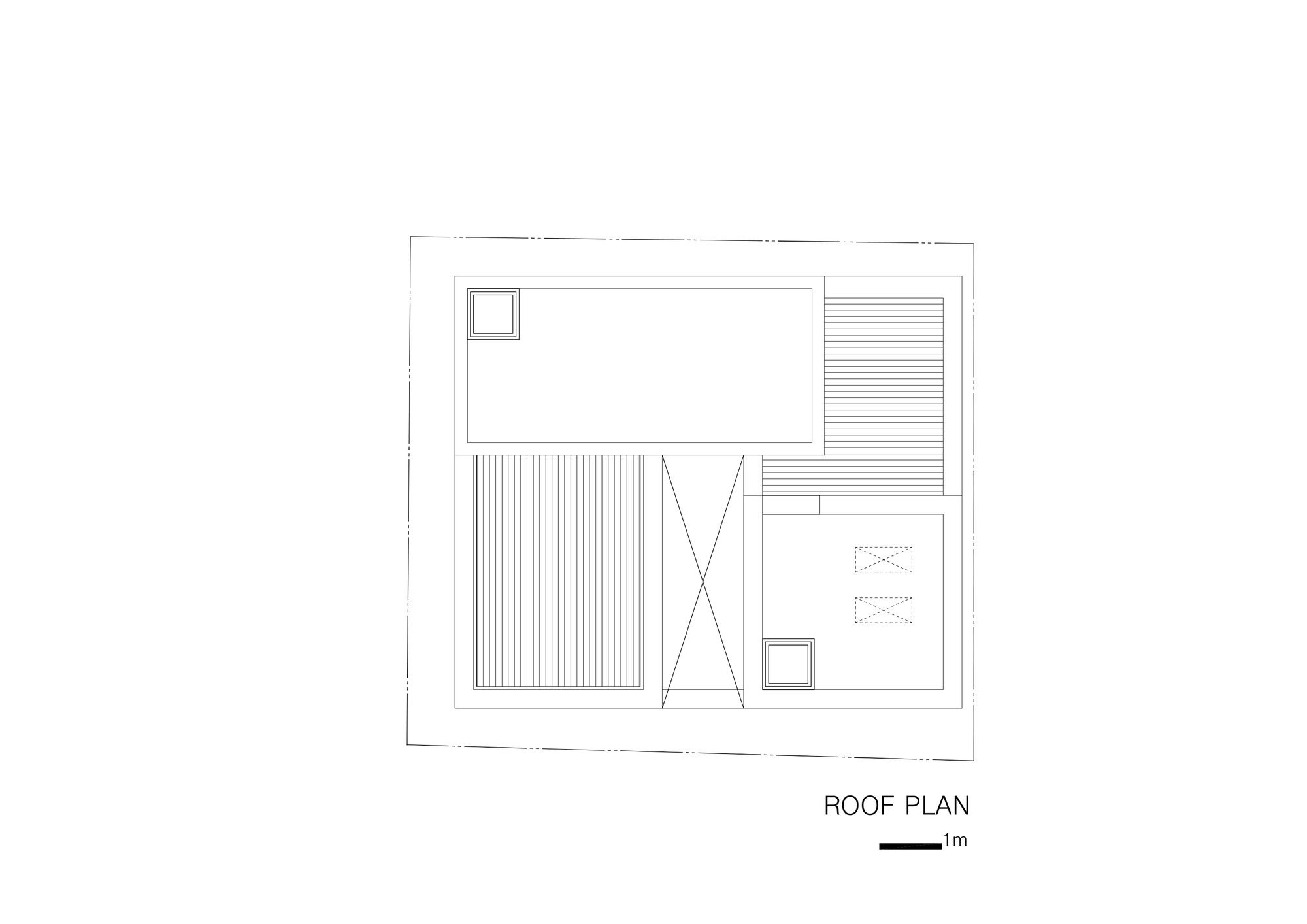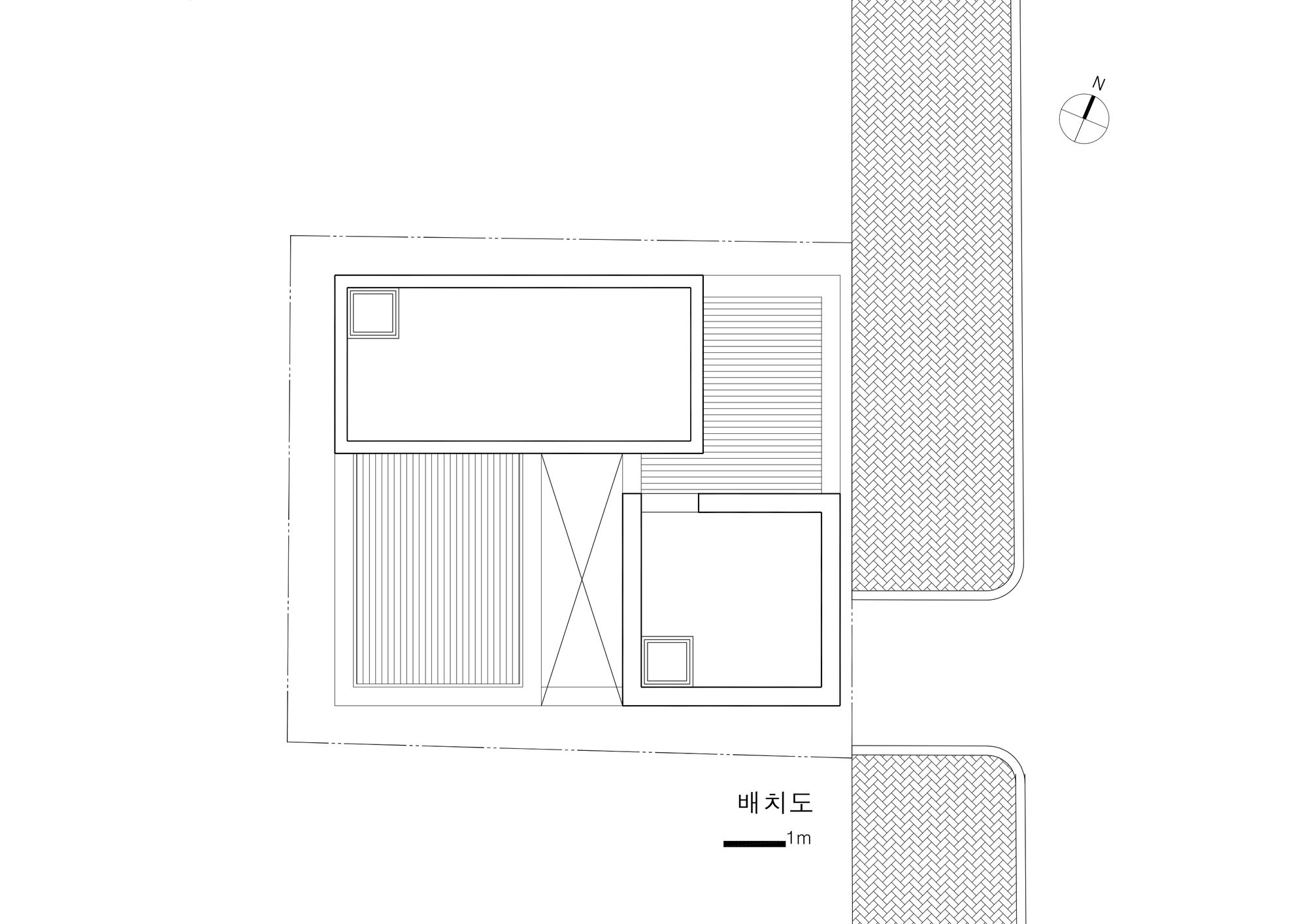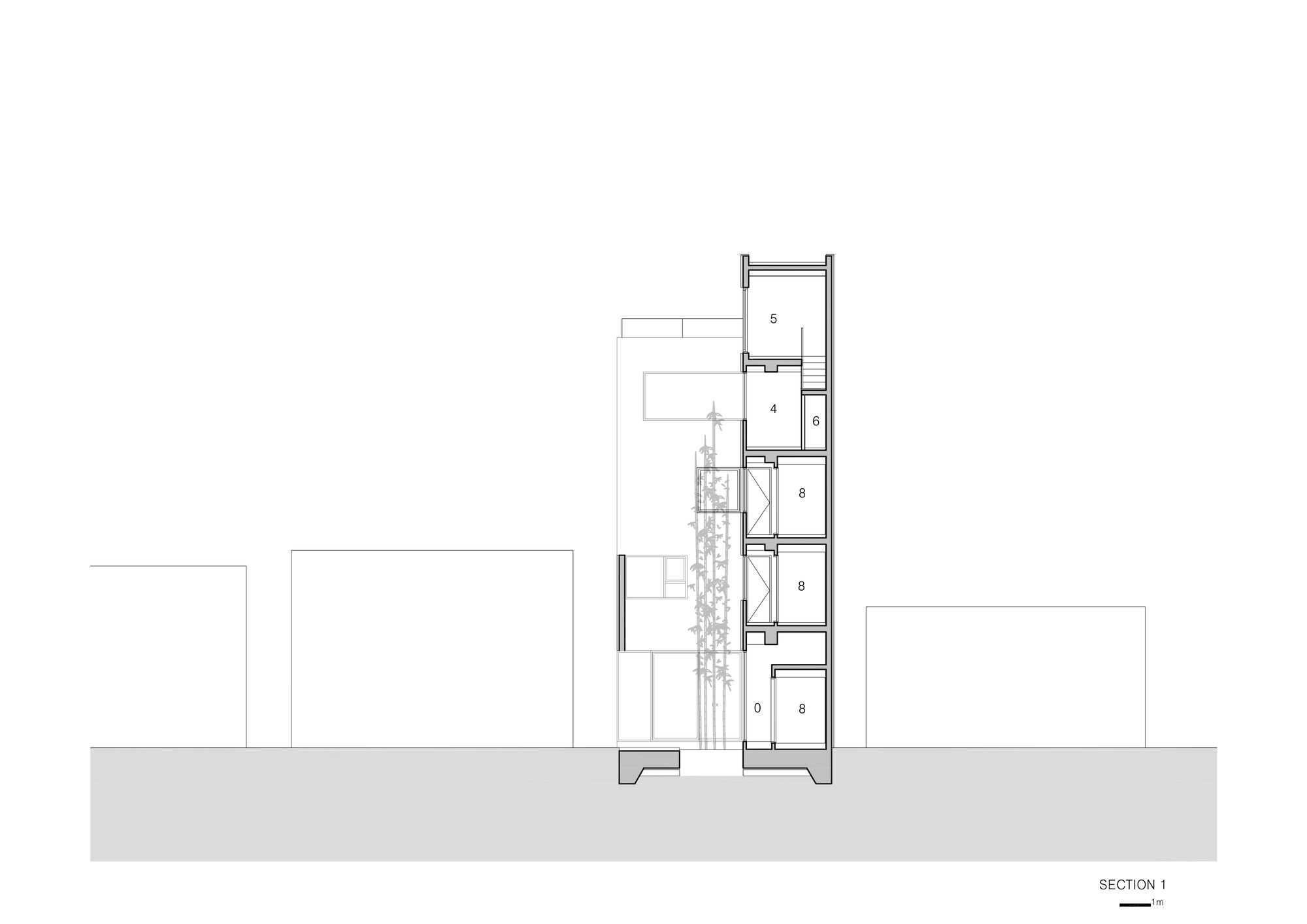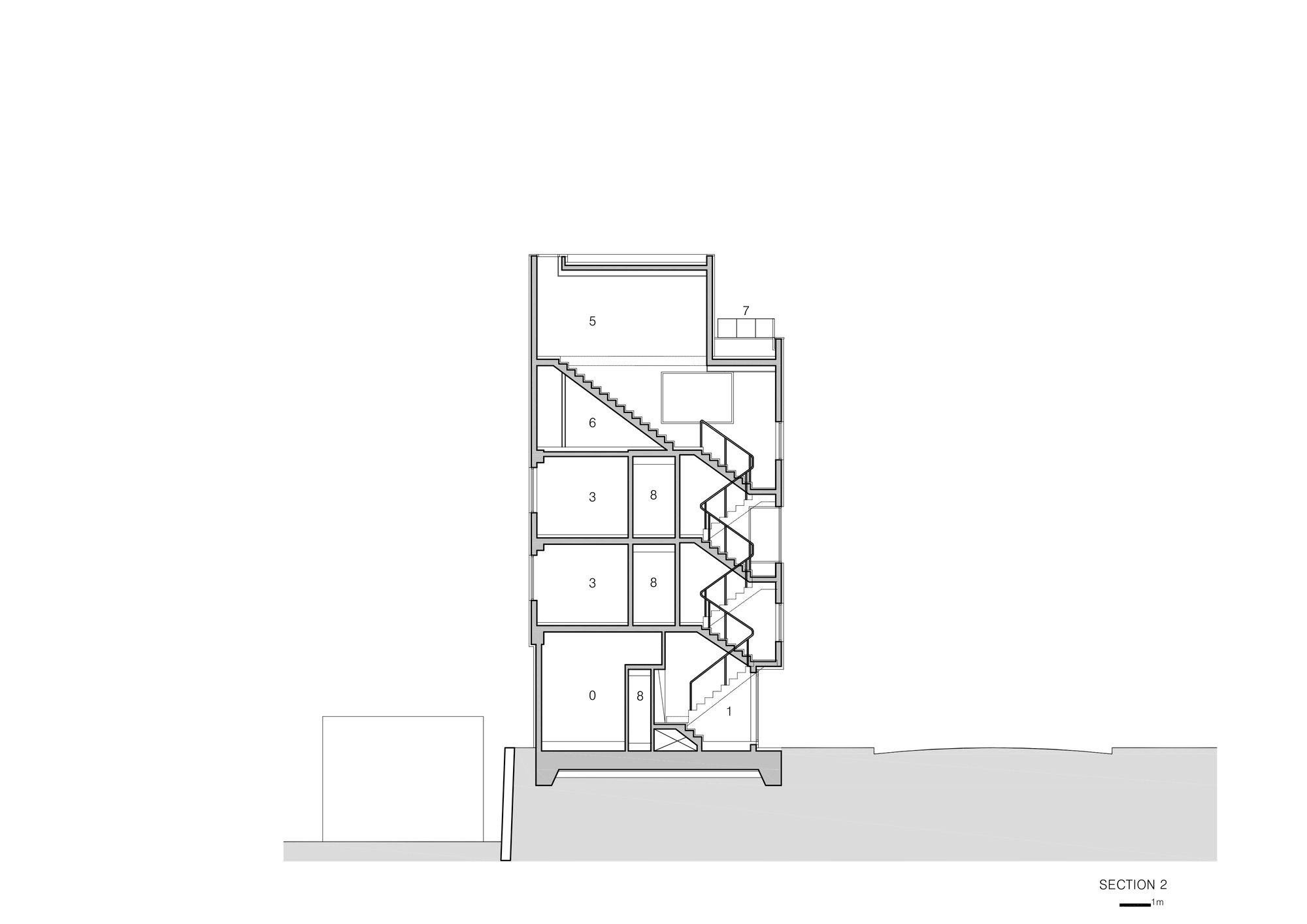Sungin Space
Back ground. Sungin 1-dong is an old district situated next to a brand new, high-rise apartment complex. As a result, this creates enormous contrast between the residential environment and the landscape by the apartment wall forming a border line. Residents of the apartments live a comfortable life fenced off from the surrounding neighborhood. The apartments contain all the facilities and services, or social infrastructure, that they need to live their lives.
For the people who live on the other side of the fence, however, things are quite different. These people cannot afford the same social infrastructure. In fact, all the facilities and services that come bundled together in a private apartment, such as a senior citizen center, a library and a community space, are forms of social infrastructure that should be provided by the public sector.
But in Korea, where the private sector has led the supply of apartment-complex housing units, even social infrastructure has been commercialized. As a result, citizens have access to the level of social infrastructure that fits their income level. This is why the social infrastructure of Sungin 1-dong’s residents is poor. Sungin 1-dong has a relatively high percentage of native residents and the average age of residents is also high. In other words, there is little influx of young people in the area. This is why the atmosphere in the neighborhood seems to be somewhat stagnant. A small intervention, Sungin Space. Sungin Space was created on Dongmasan-gil, Sungin 1-dong, to revitalize the area and provide some balance with the nearby apartment complex. It is mainly divided into two areas.
The first floor is a shared space not only for residents of the village, but also for people living in other areas, and for those residing on upper floors of the share-house. It is used for various kinds of purpose such as small group gathering, exhibitions, and pop-up store. The Second to fifth floors are share -house for young people with the hope of revitalizing the village. New prototype. Shared housing is a new way of life that has appeared for economic reasons. A new way of life inevitably demands the emergence of a new residential style.
However, this new way of life has been mostly contained in existing residential spaces such as apartments and multi-family homes. In the era of single-person households, shared housing should be considered a sustainable communal housing format. Shared housing extends the shared area from external (city) to the internal (house). In other words, the relationship between the house and the public square has been substituted with the relationship between the ‘room’ and the ‘living room’. The rooms in a share house should be as private as possible.
Residents must have their own personal shelter (house), so they can be easy to mingle in the square. This is why the mass was split and the rooms were built like independent spaces, even though the house is small. As a result, each room has individual ventilation and the scenery and natural lighting are also doubled. On the other hand, the shared space on the first floor transparently connected the divided masses. Not only the front door facing the street, but also the folding doors in the small courtyard with bamboo are all transparent and openable, providing an expandable space and a lively view into the street.
Project Info:
Architects: Space Matter
Location: South Korea
Area: 153 m²
Project Year: 2020
Photographs: Jinbo Choi
by OMAR MAMDOUH
photography by © Jinbo Choi
photography by © Jinbo Choi
photography by © Jinbo Choi
photography by © Jinbo Choi
photography by © Jinbo Choi
photography by © Jinbo Choi
photography by © Jinbo Choi
photography by © Jinbo Choi
photography by © Jinbo Choi
photography by © Jinbo Choi
photography by © Jinbo Choi
photography by © Jinbo Choi
photography by © Jinbo Choi
photography by © Jinbo Choi
photography by © Jinbo Choi
photography by © Jinbo Choi
photography by © Jinbo Choi
photography by © Jinbo Choi
photography by © Jinbo Choi
photography by © Jinbo Choi
photography by © Jinbo Choi
photography by © Jinbo Choi
photography by © Jinbo Choi
photography by © Jinbo Choi
photography by © Jinbo Choi
First Floor Plan
Second Floor Plan
Third Floor Plan
Fourth Floor Plan
Fifth Floor Plan
Roof Plan
Site Plan
Section 01
Section 02


